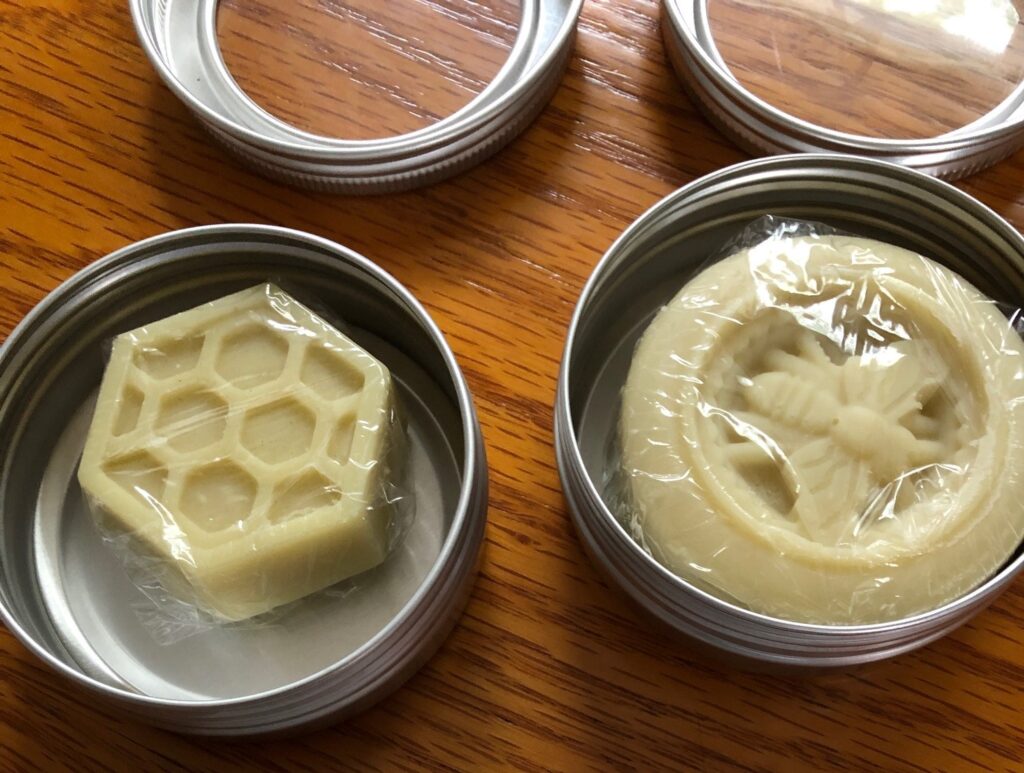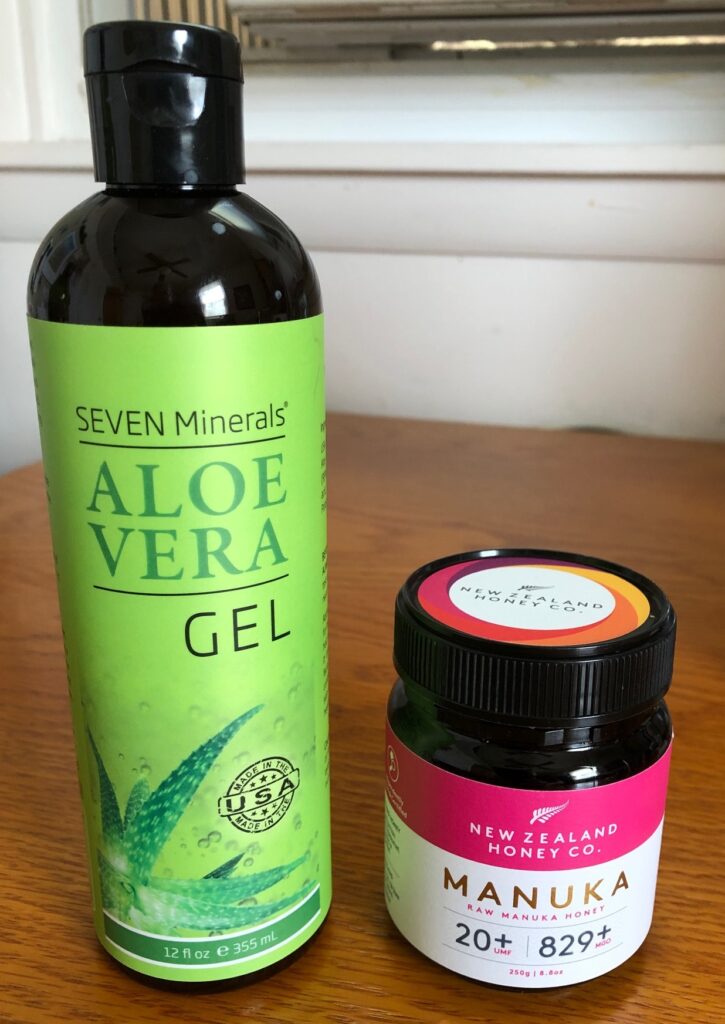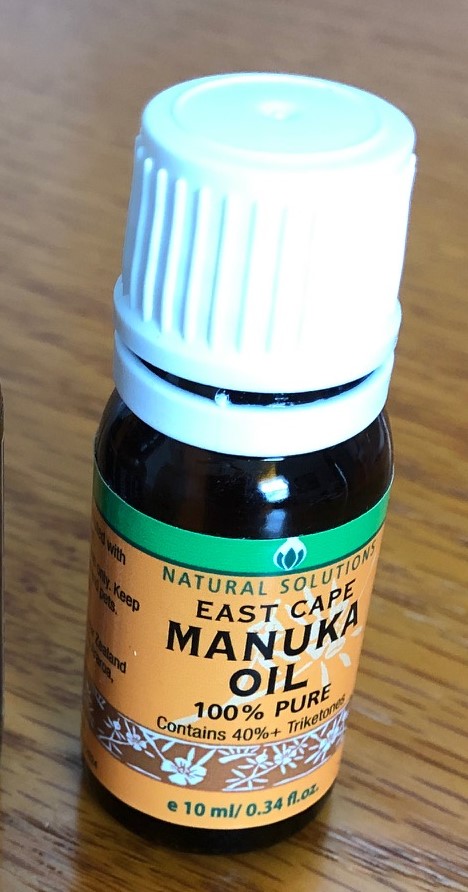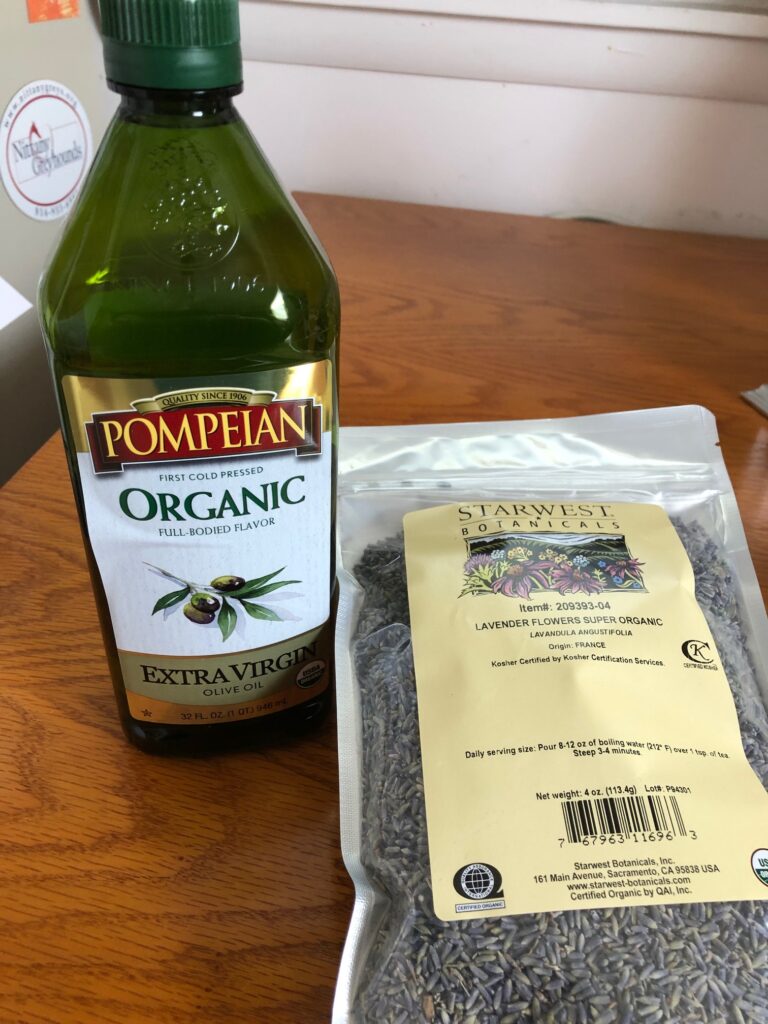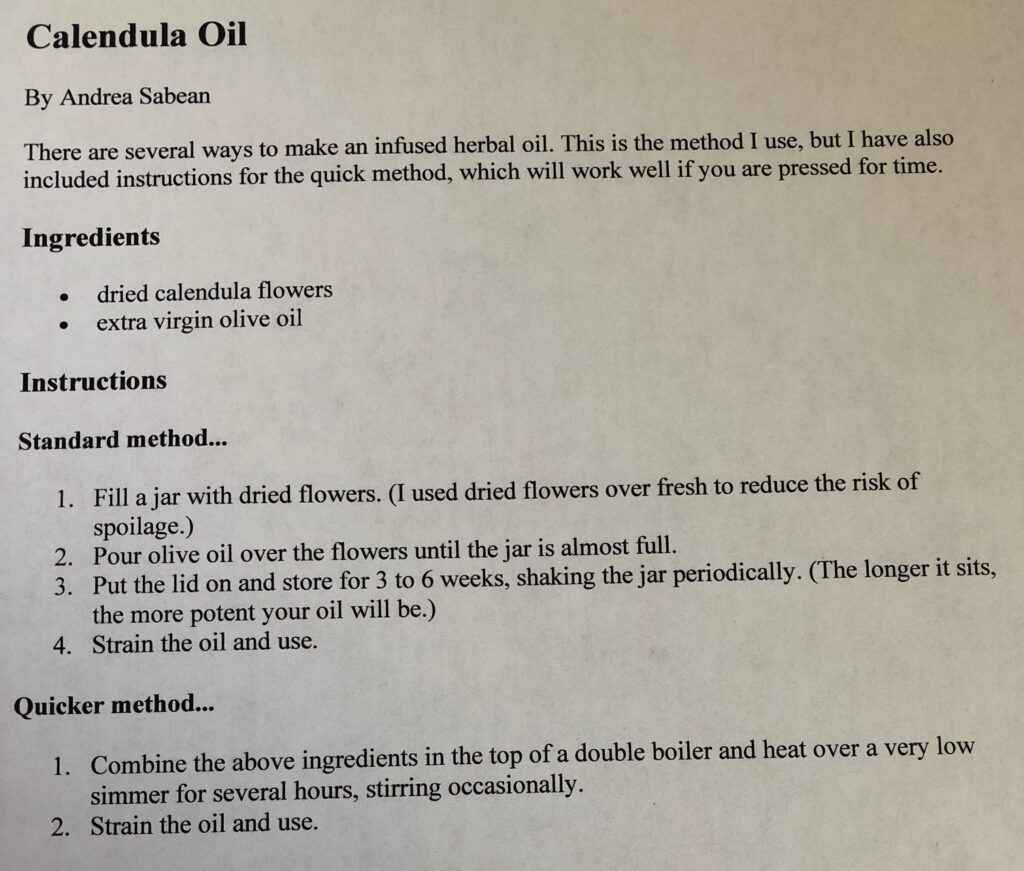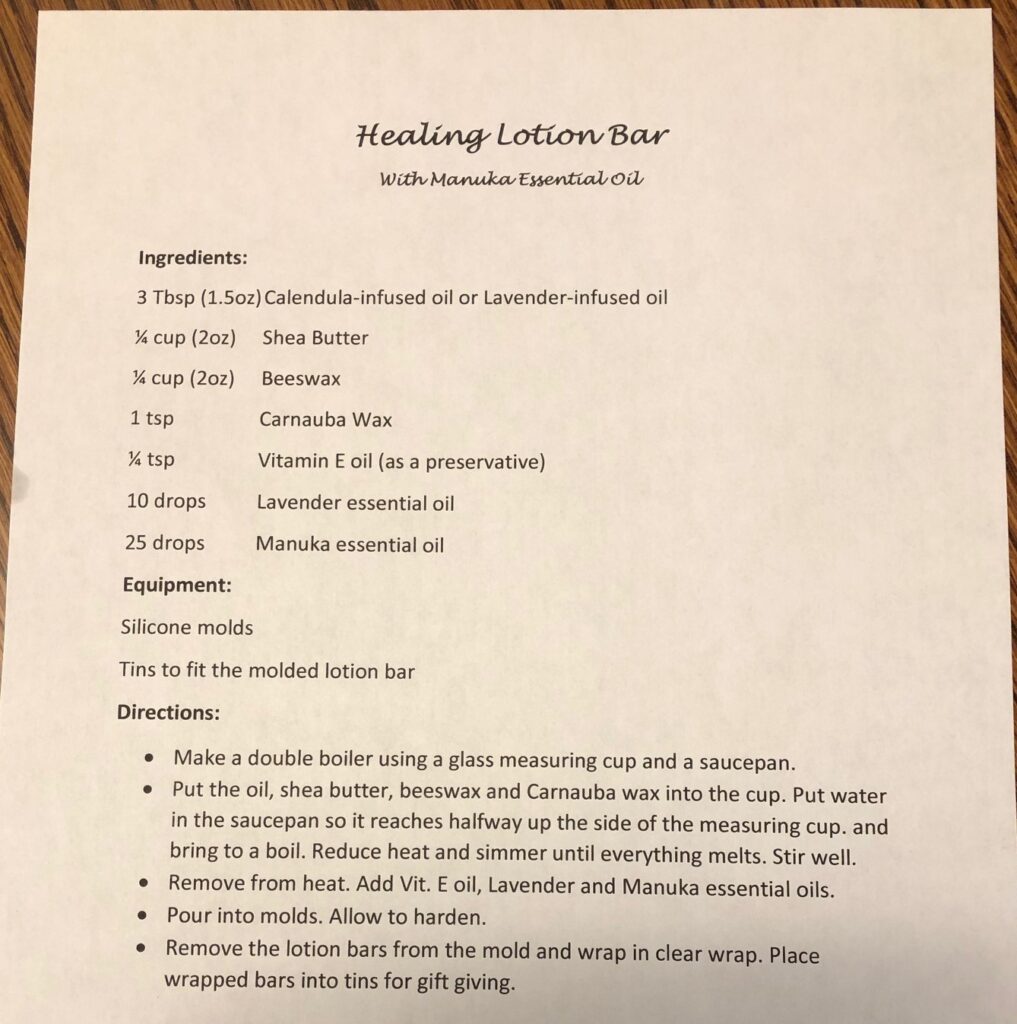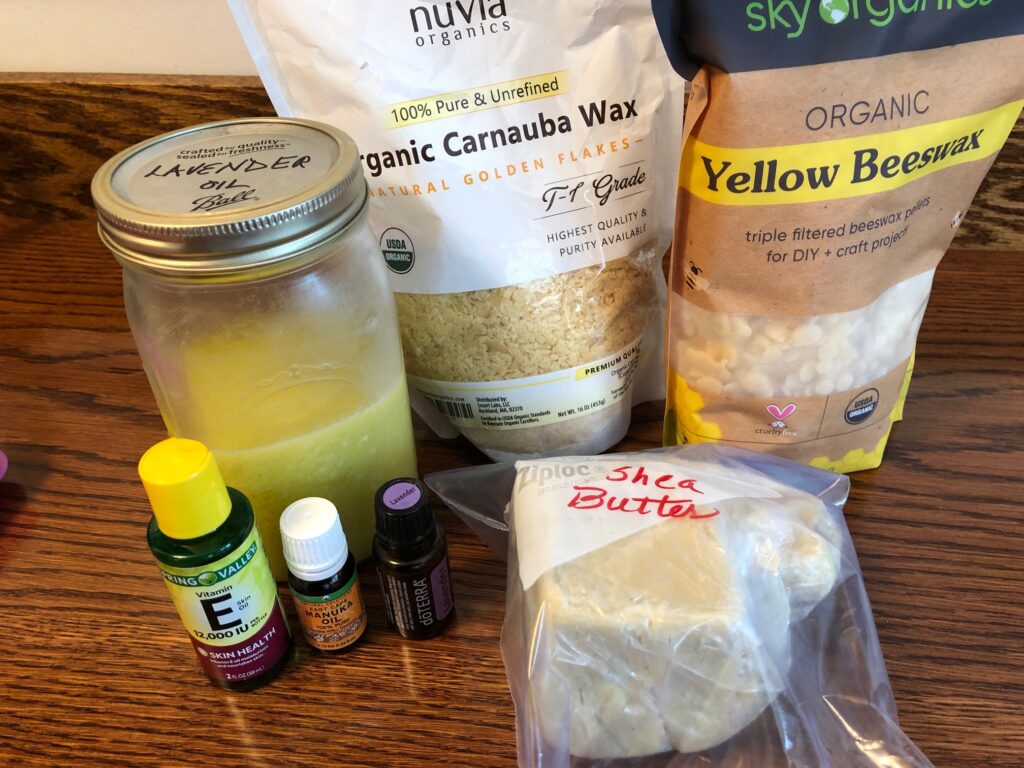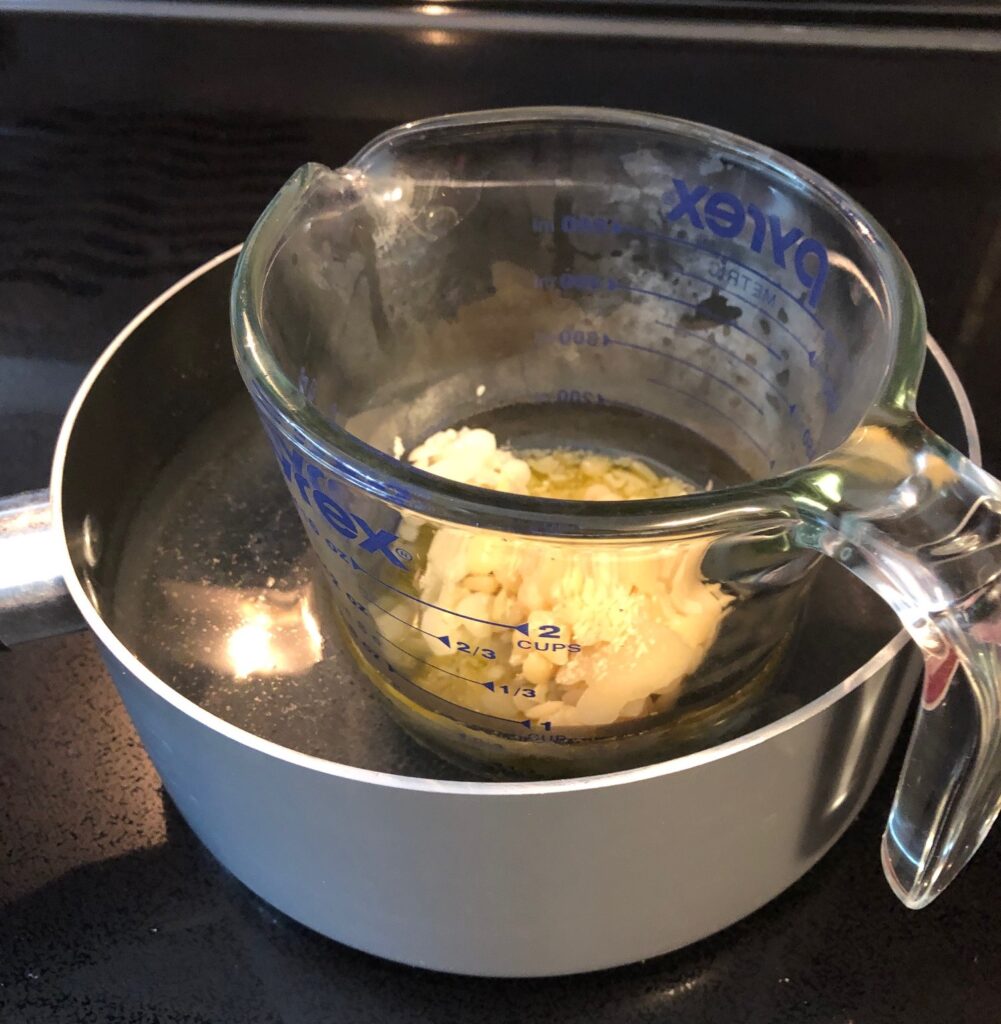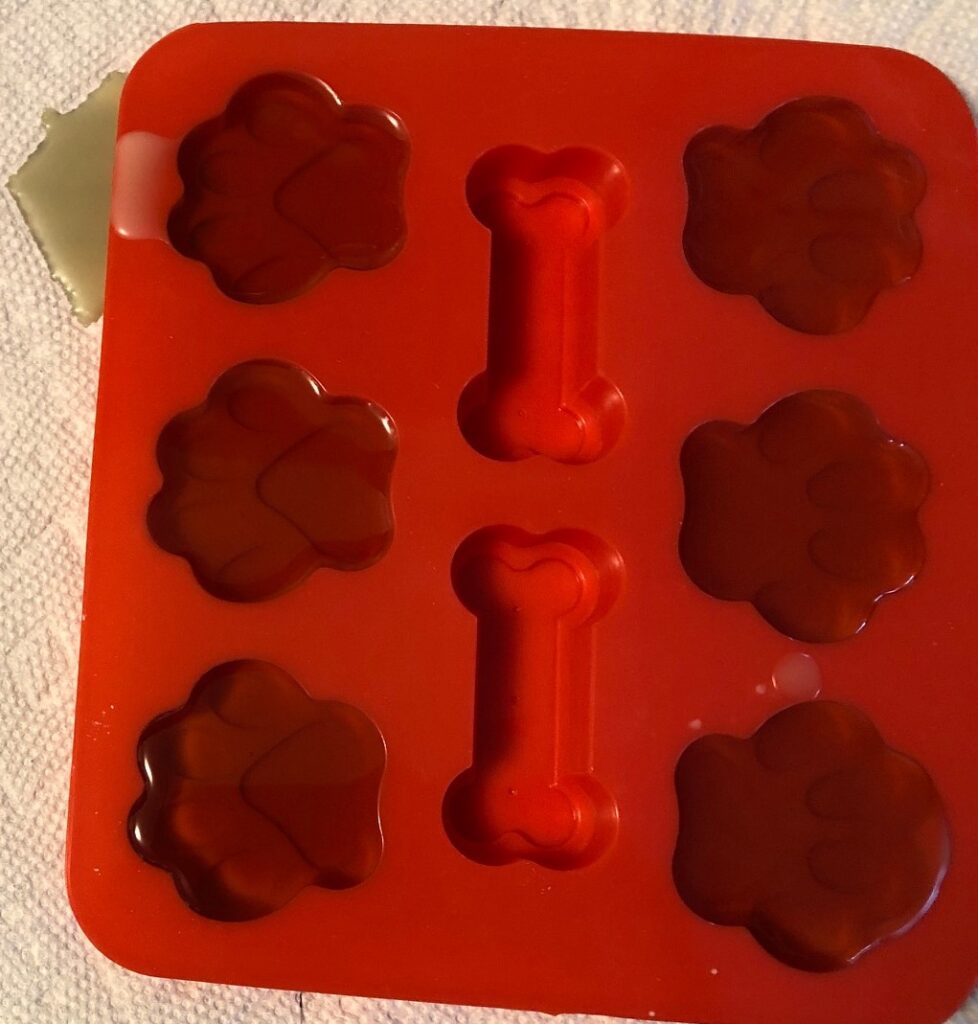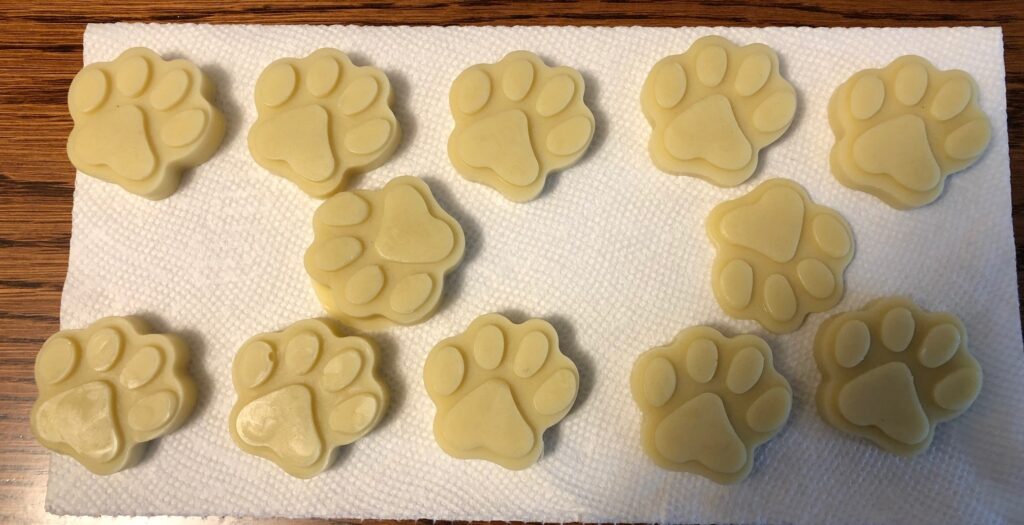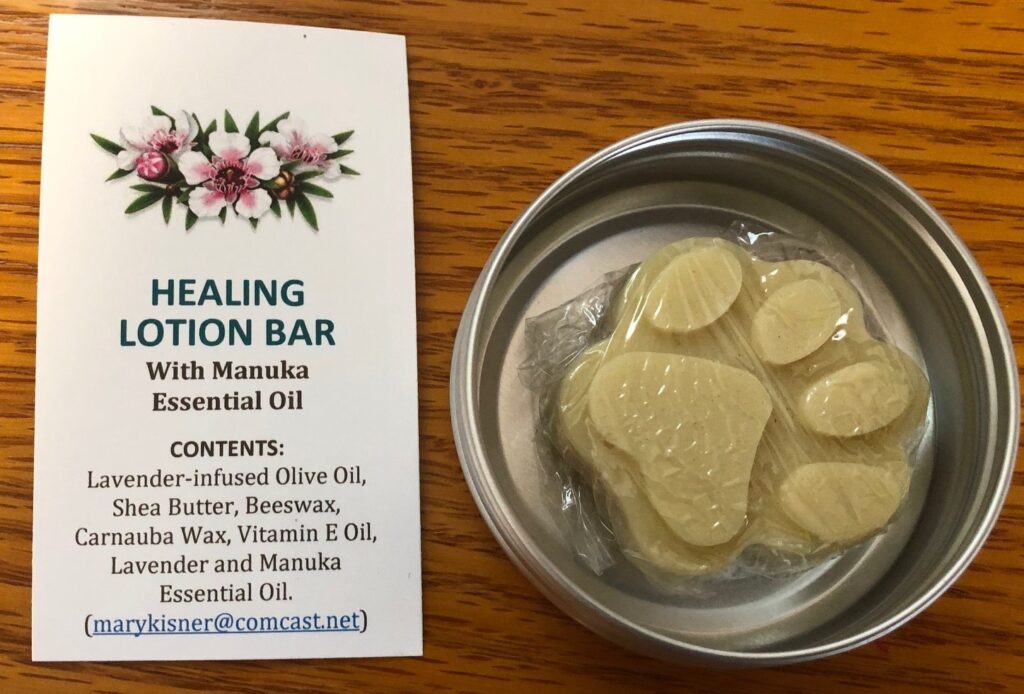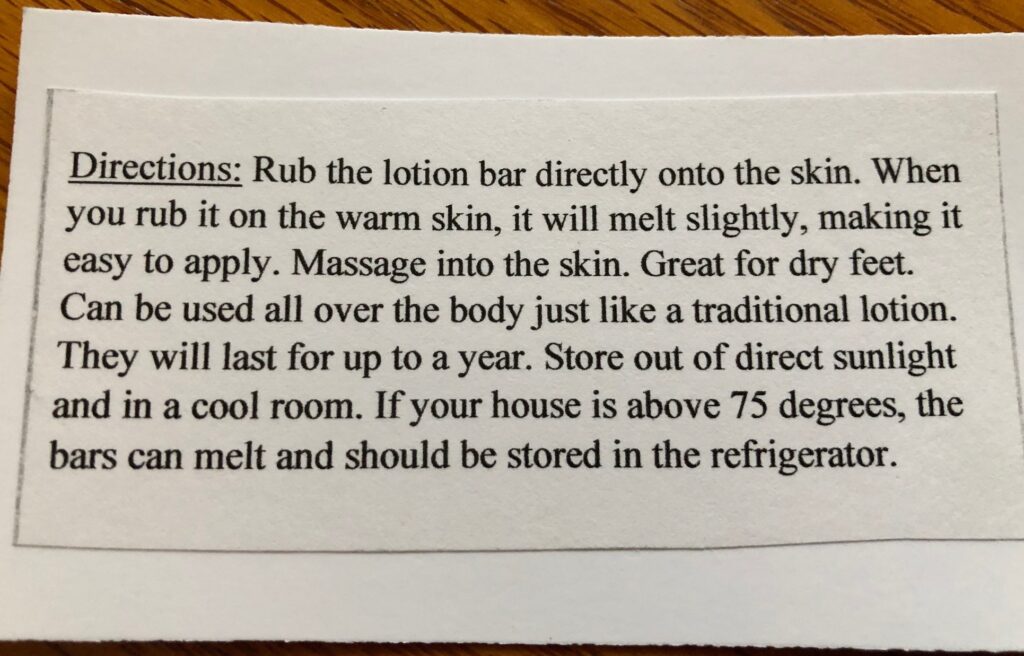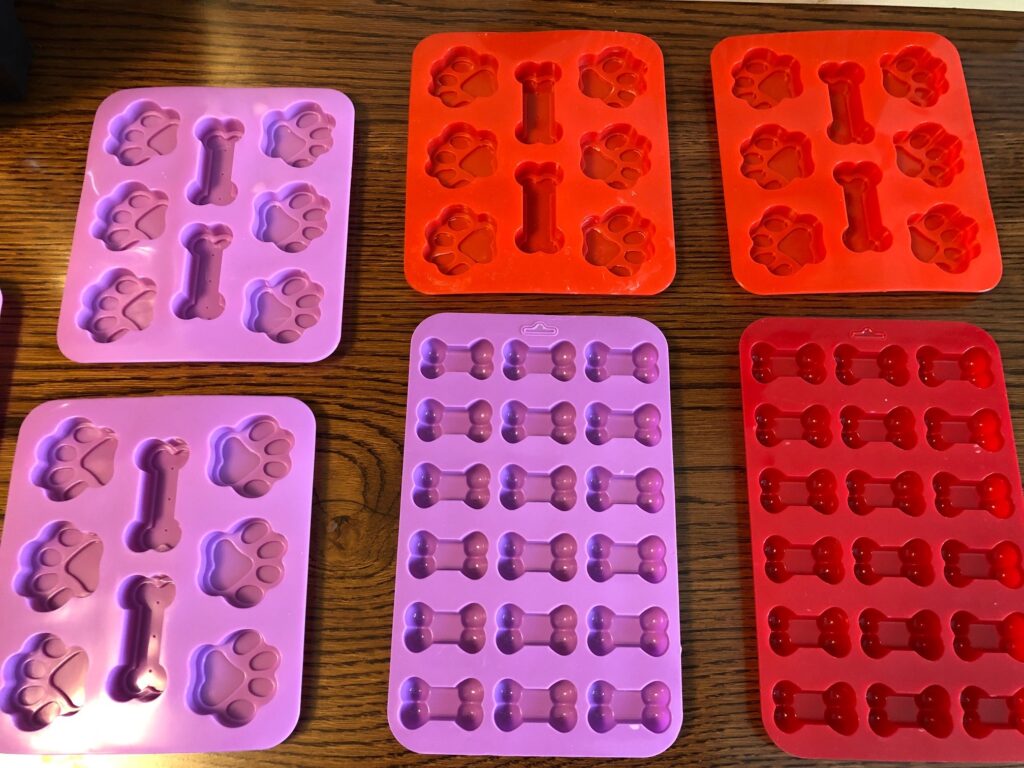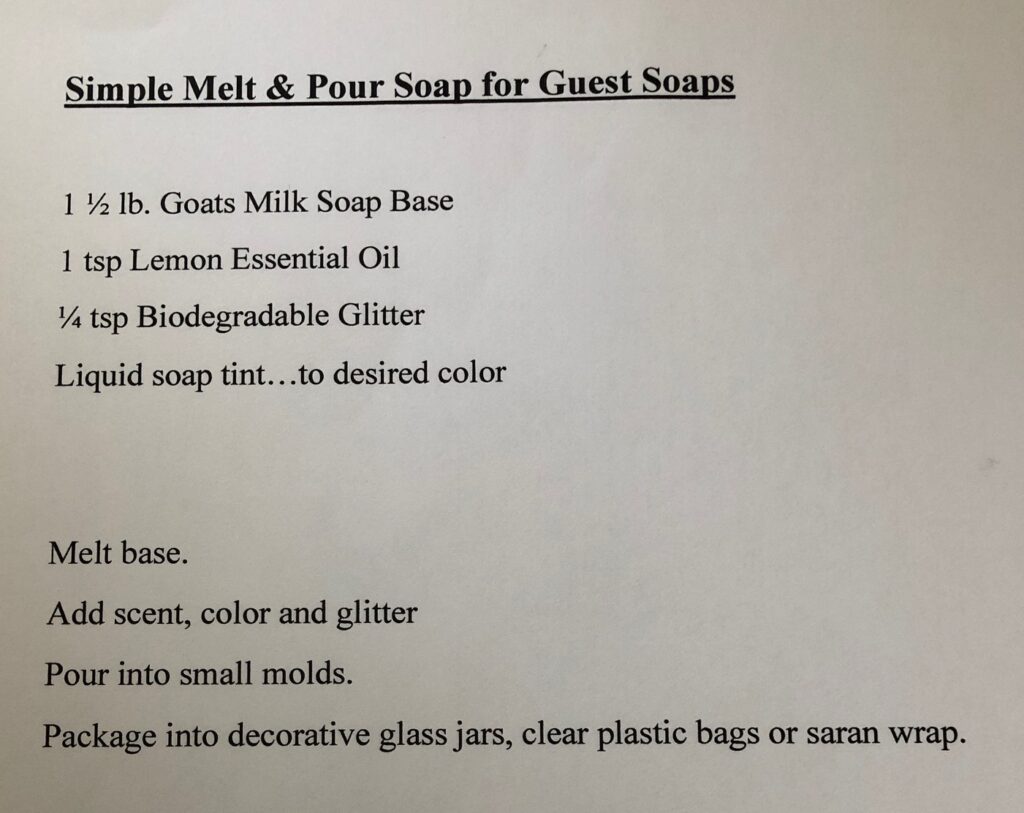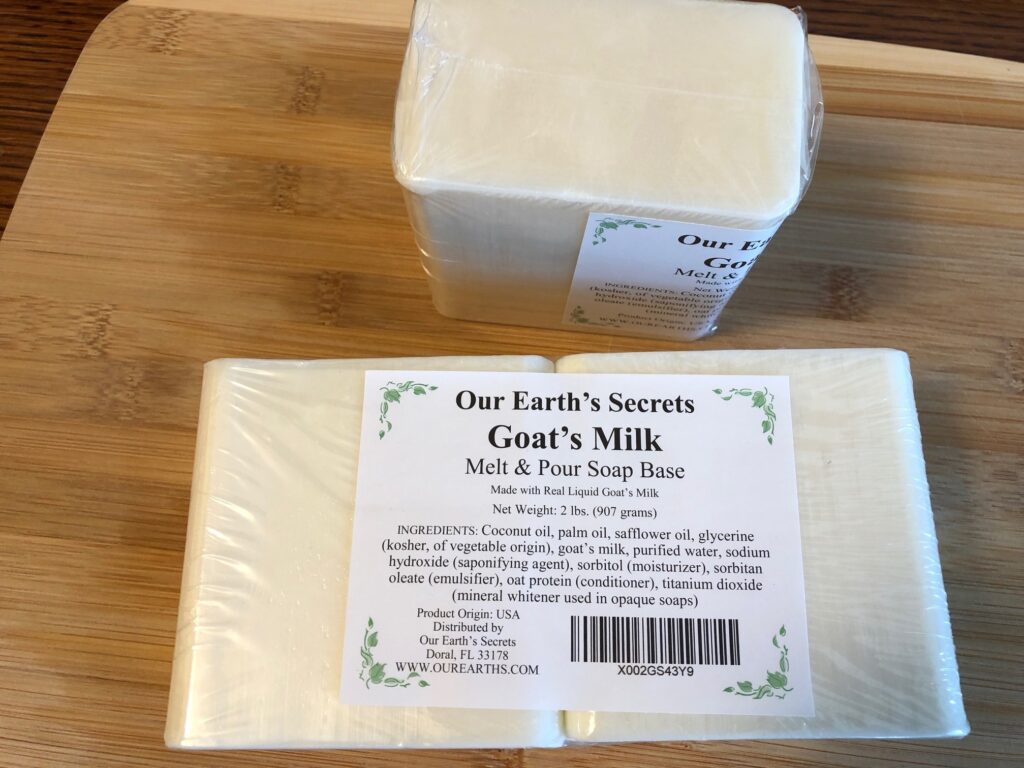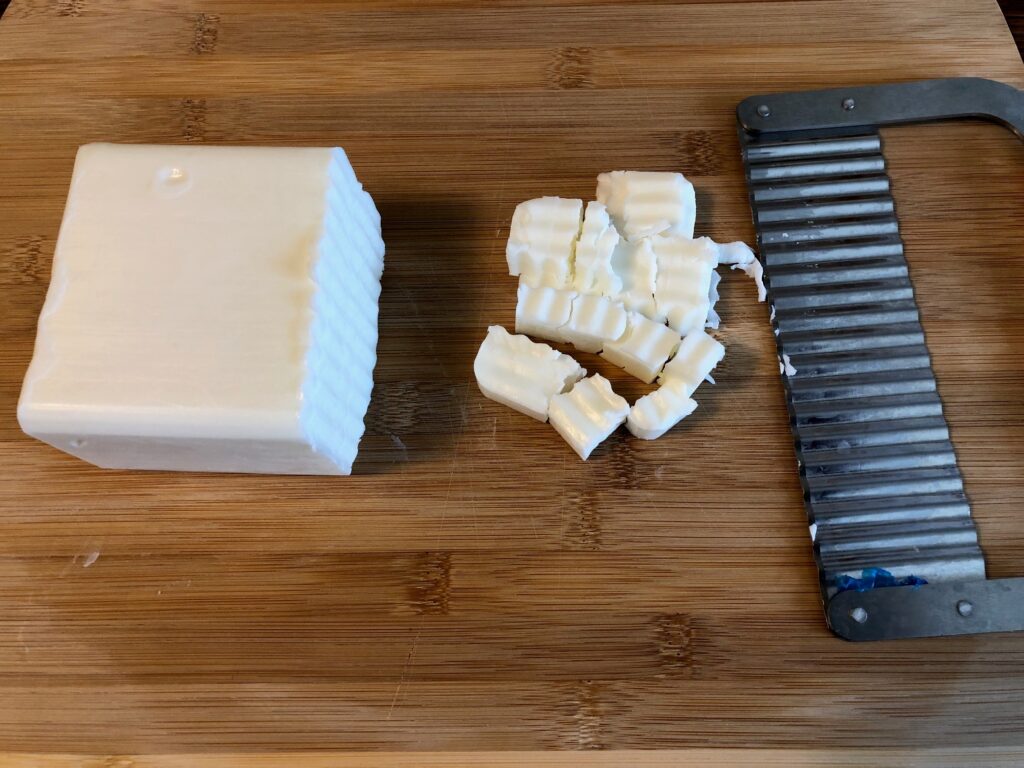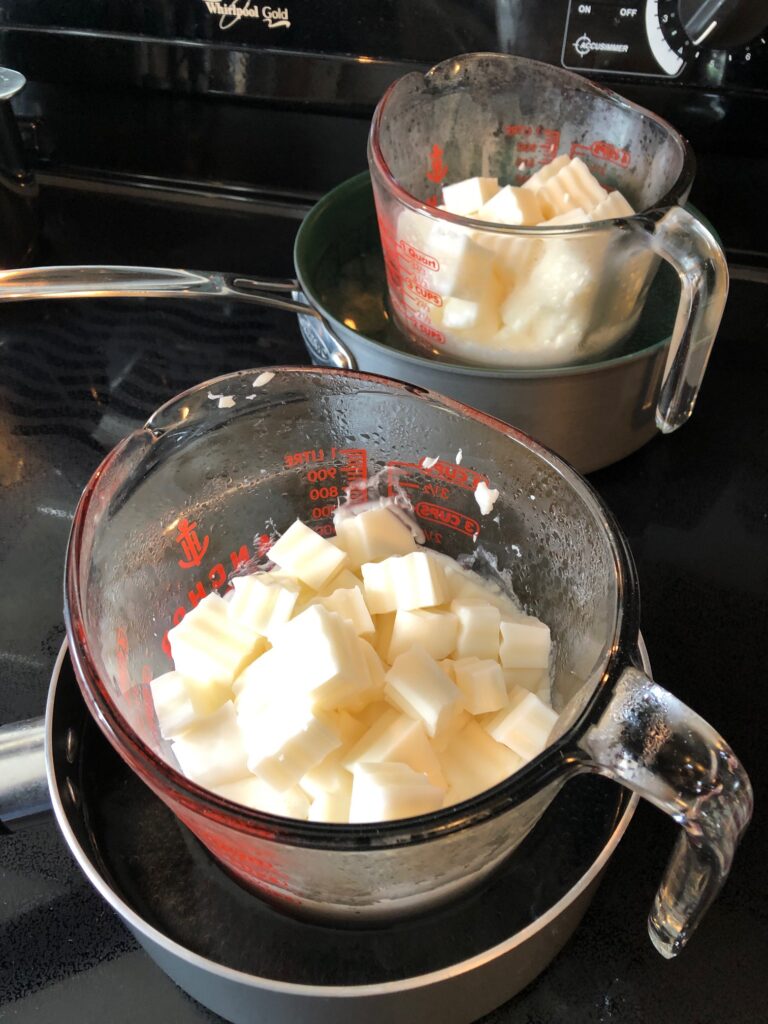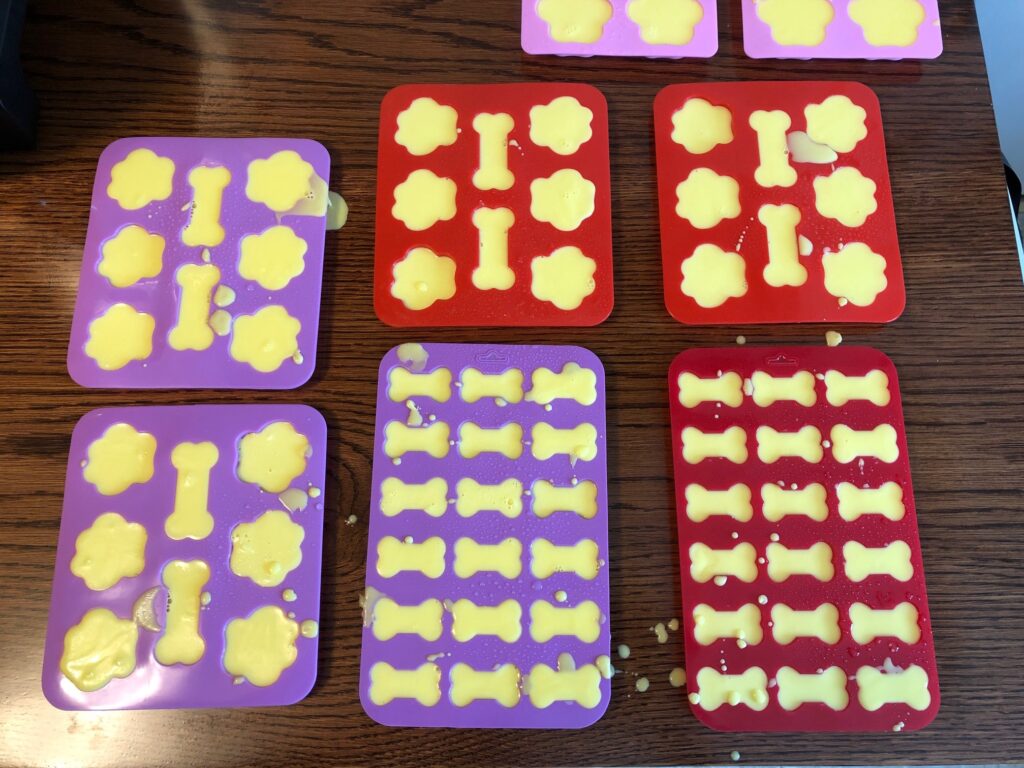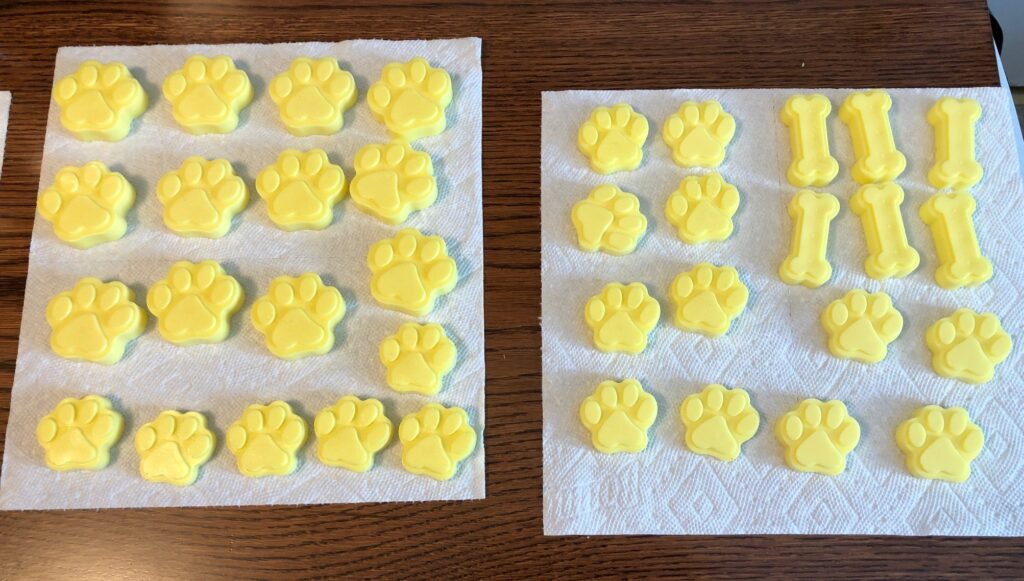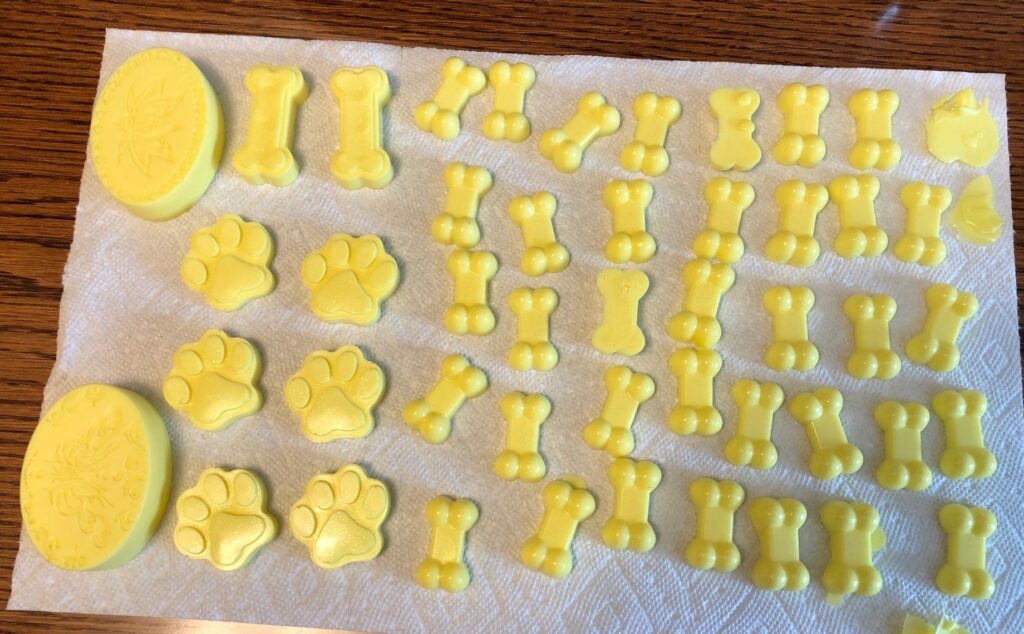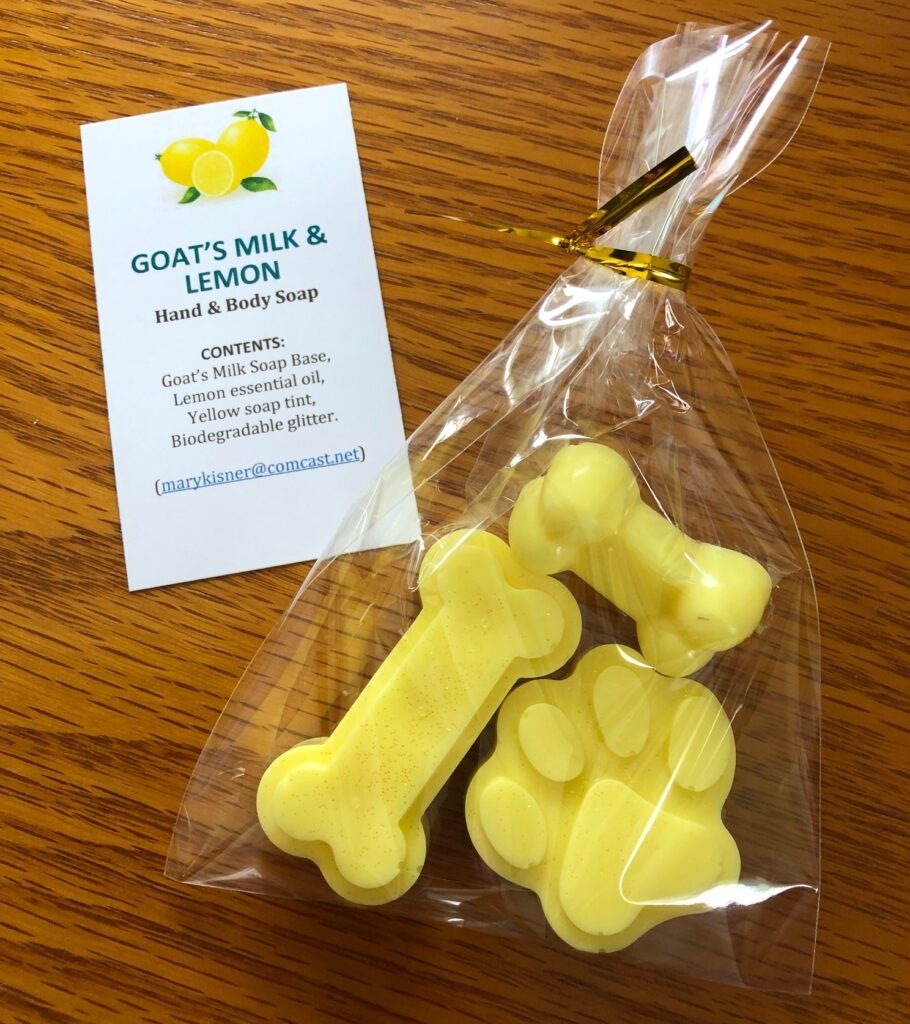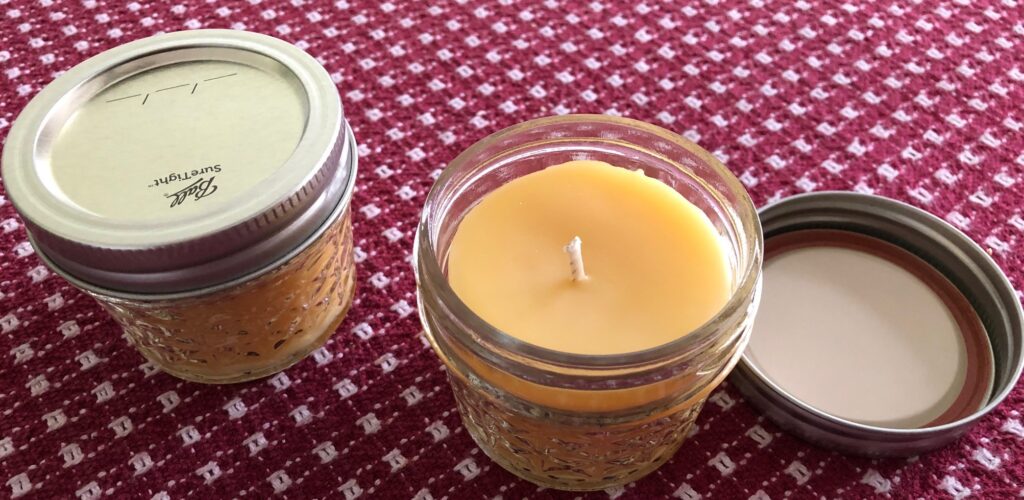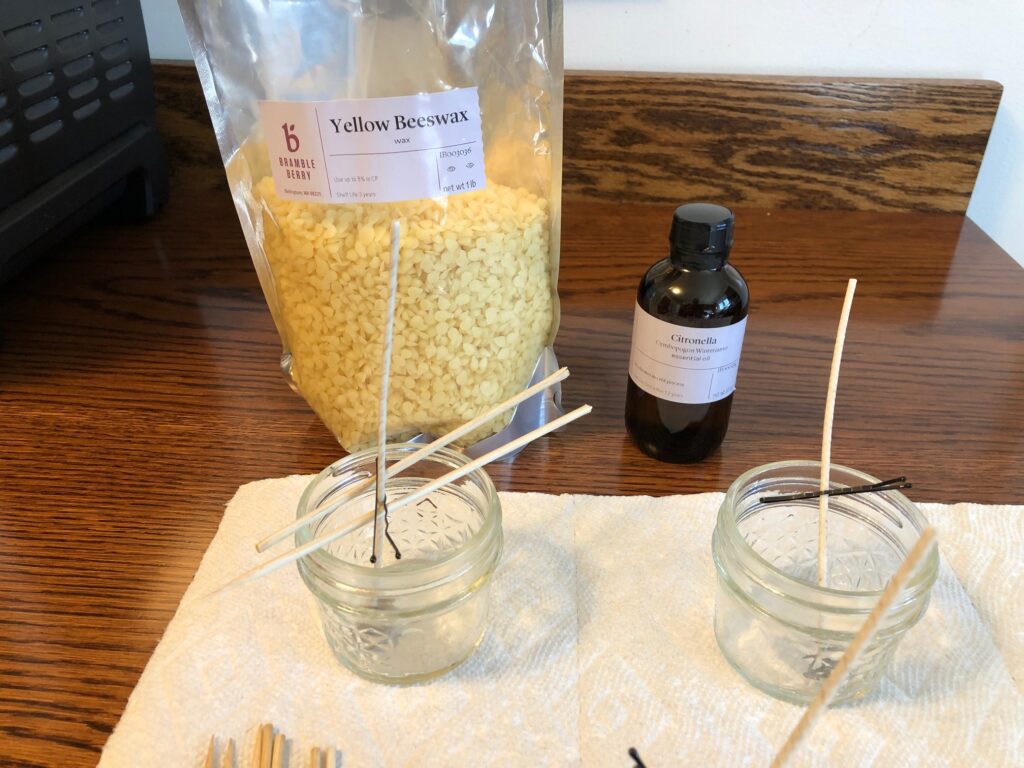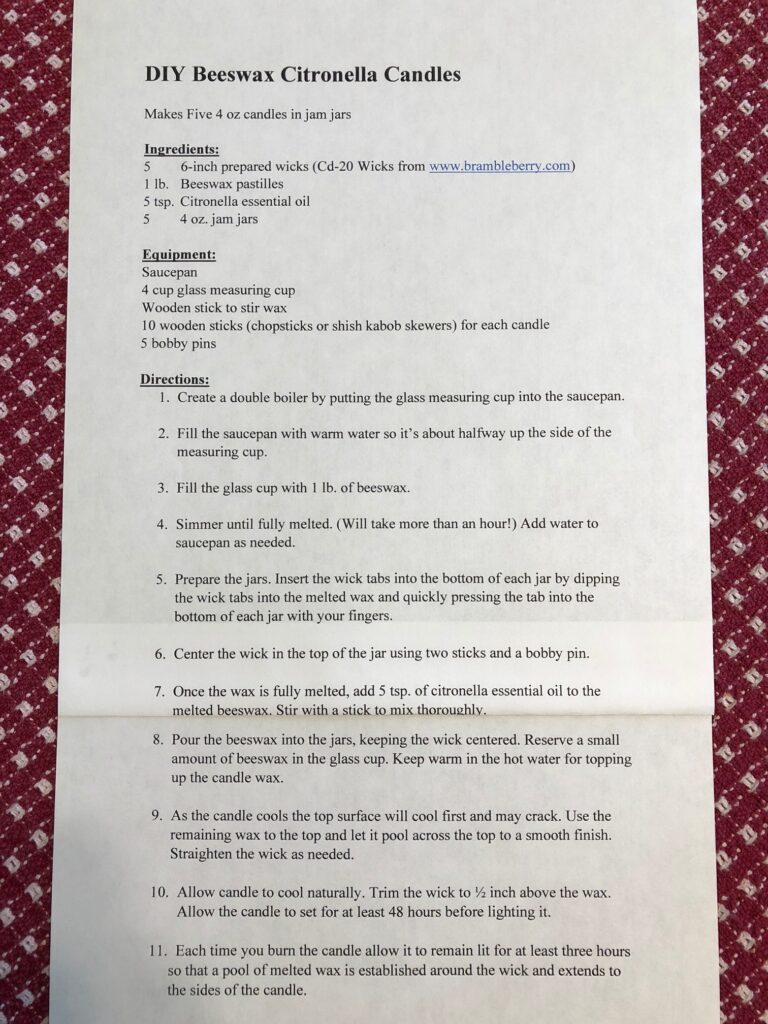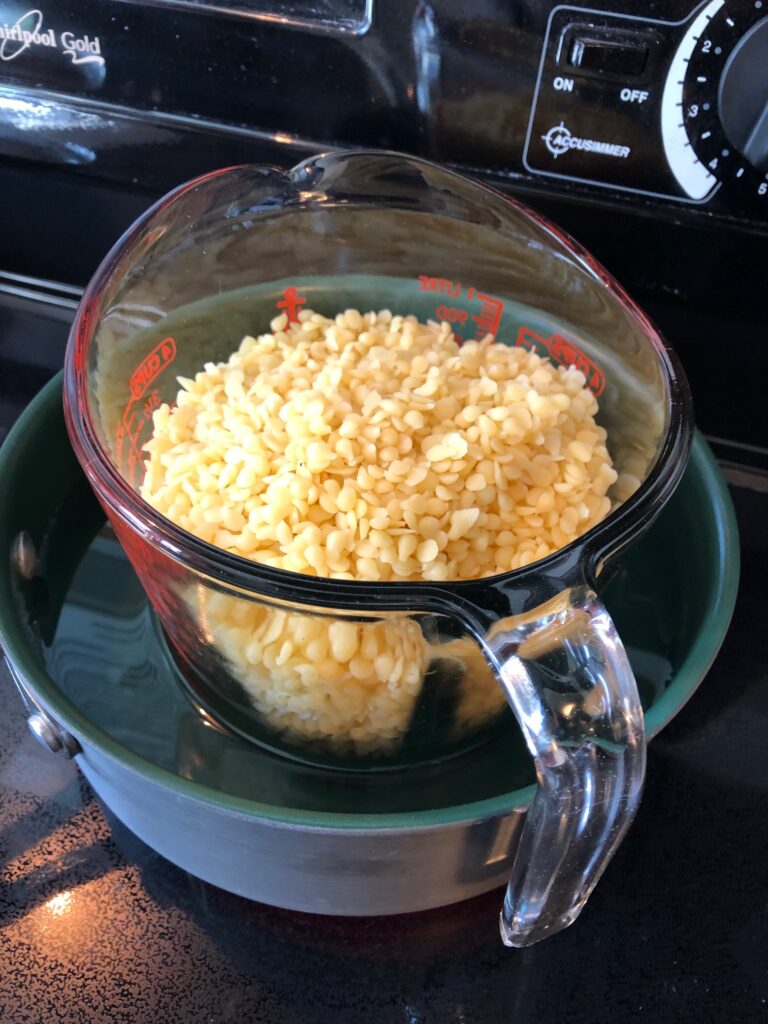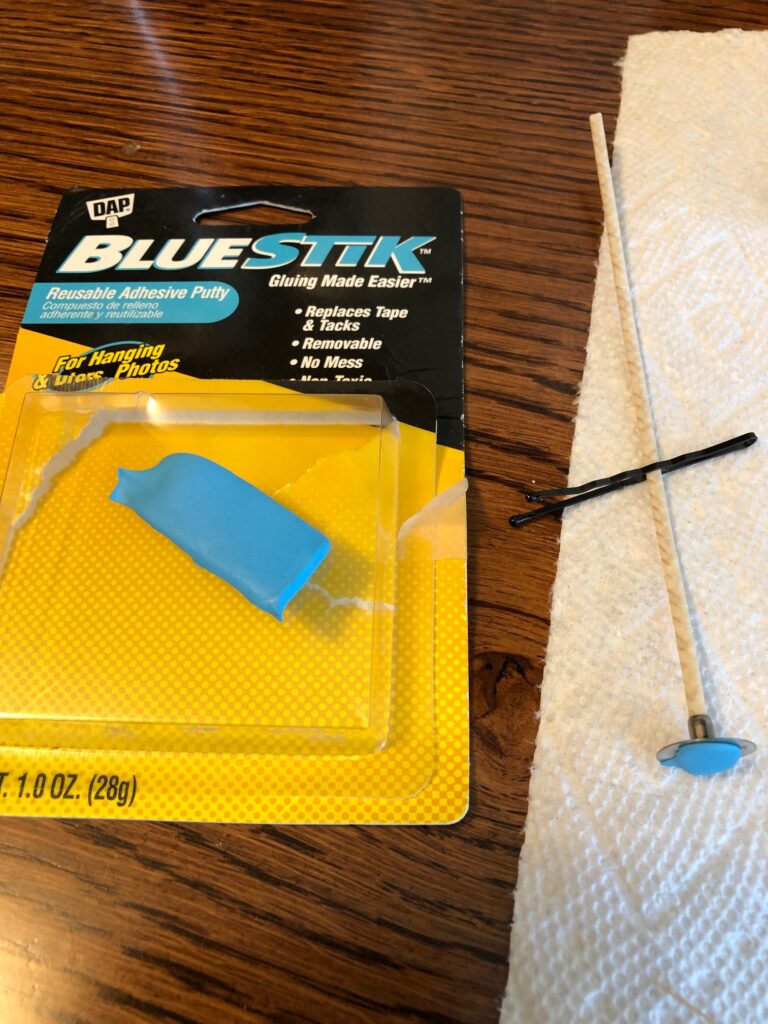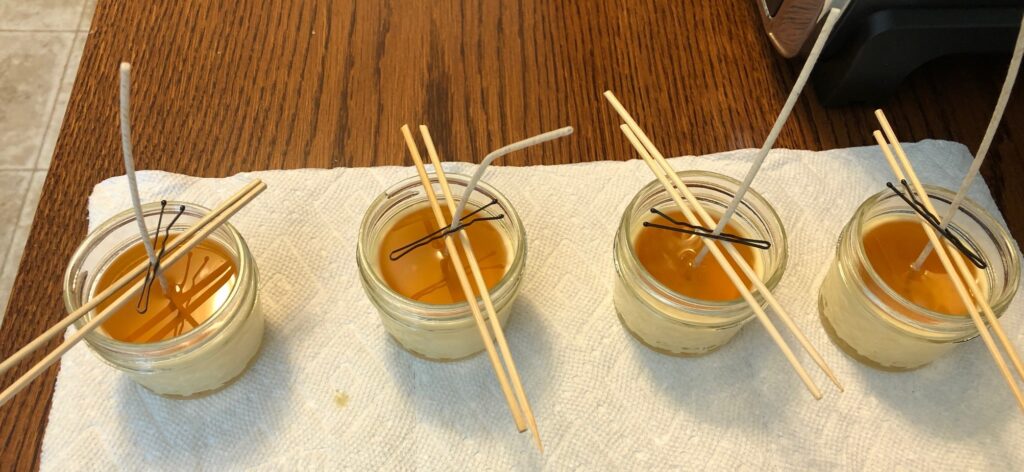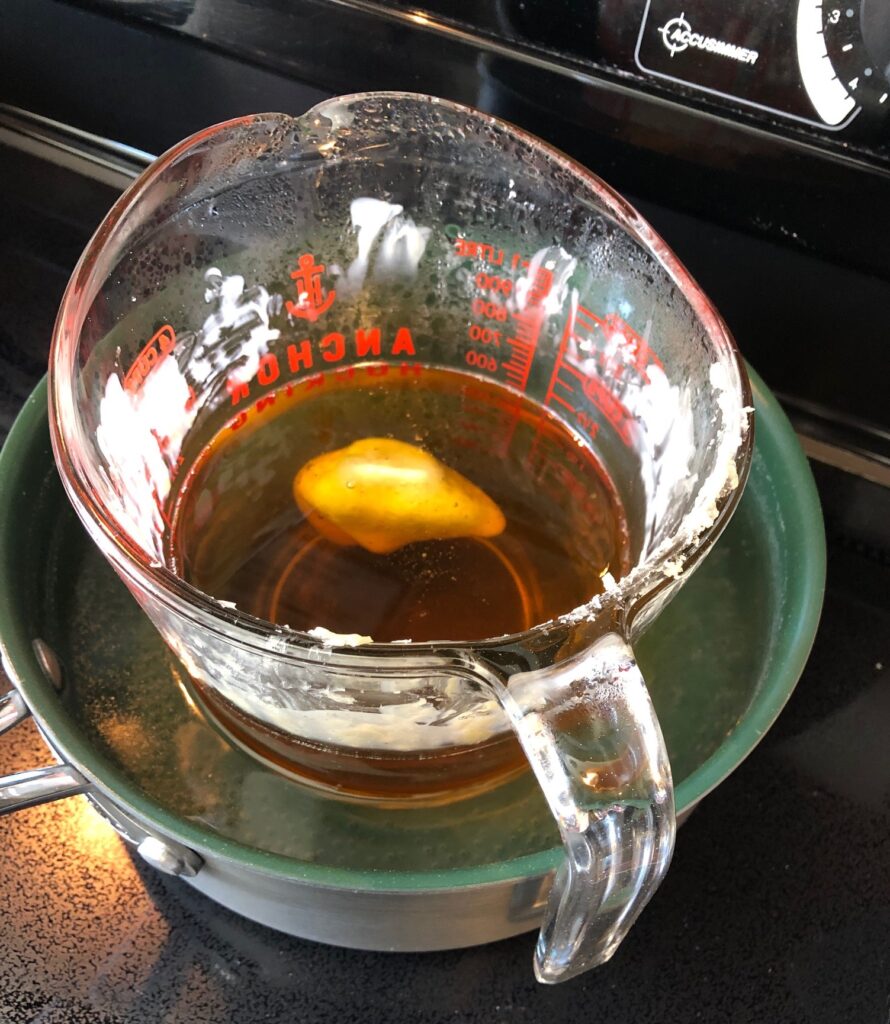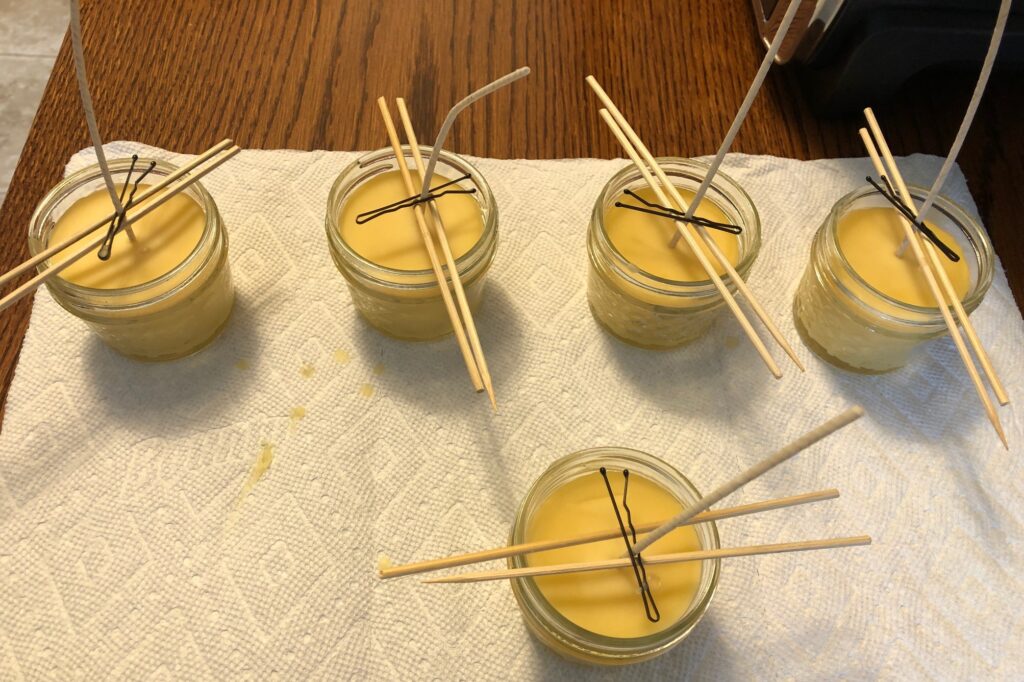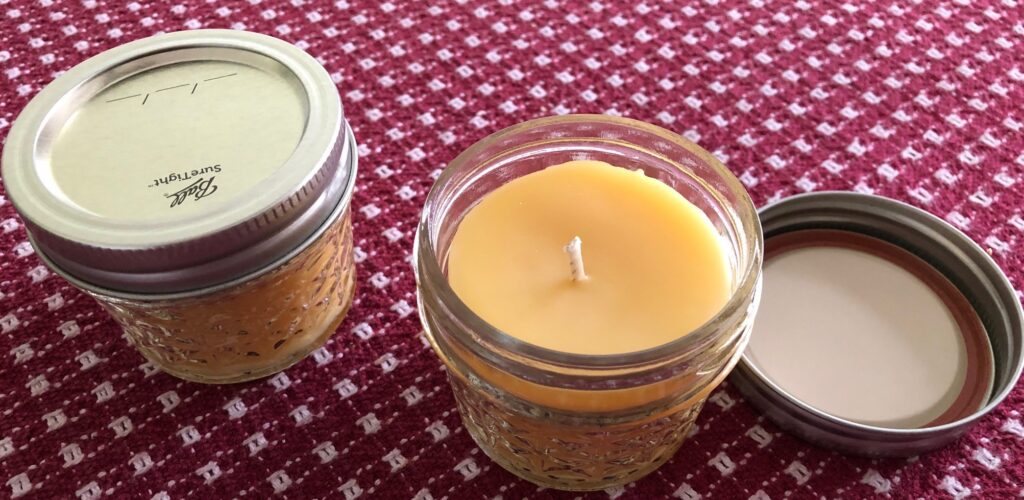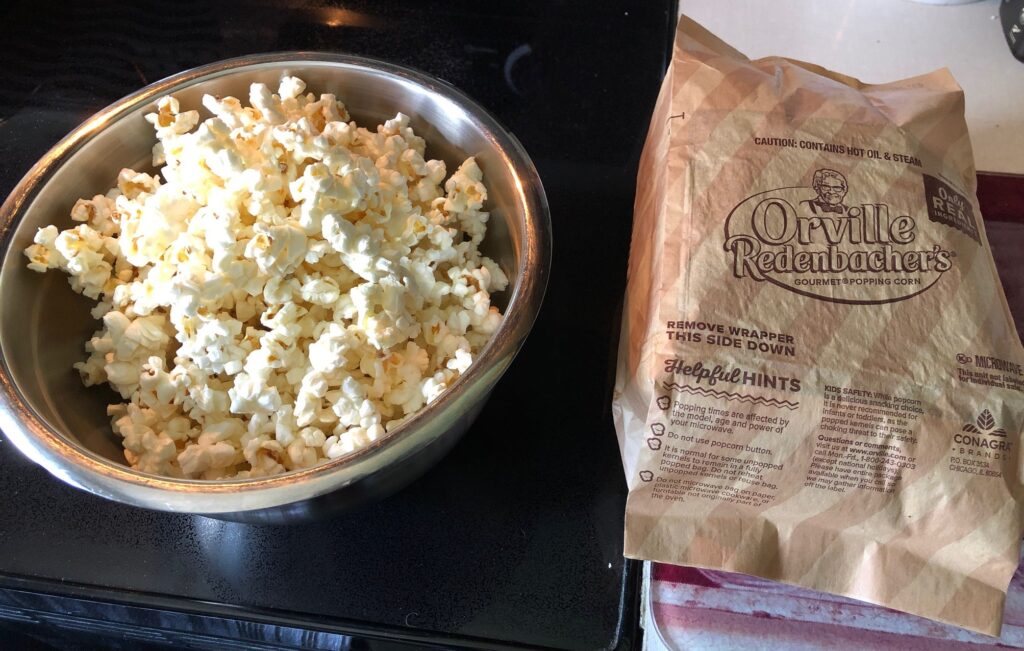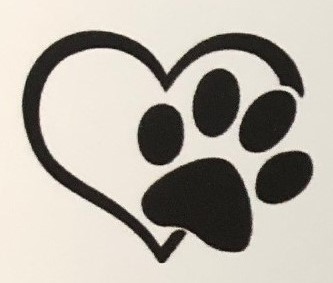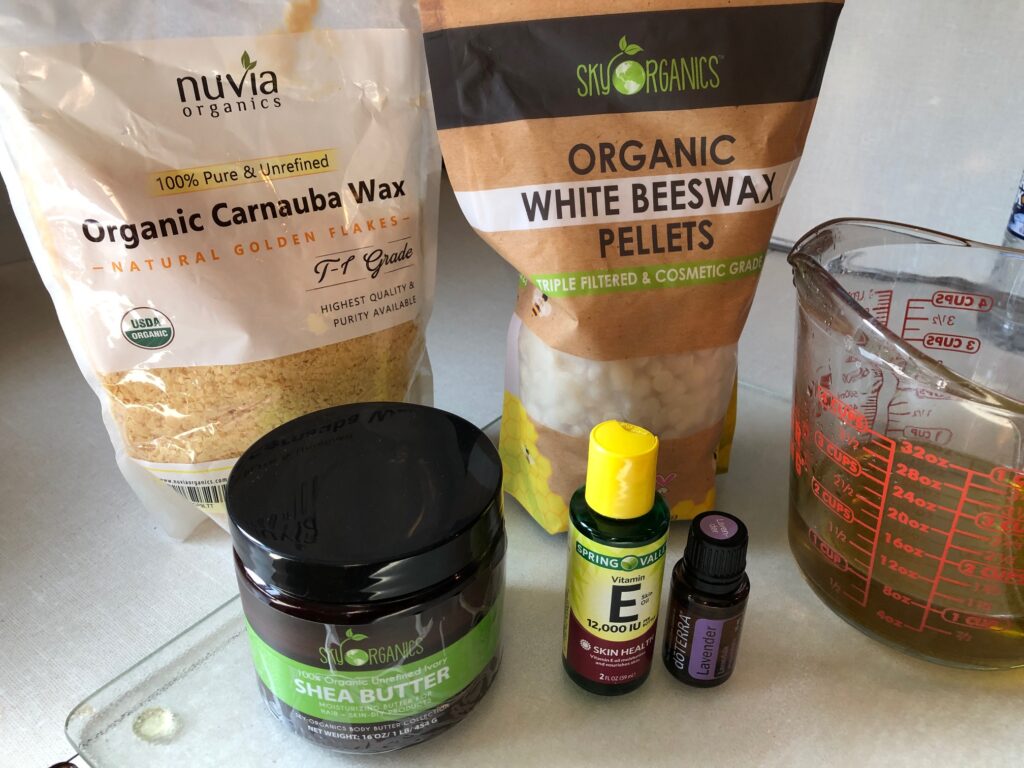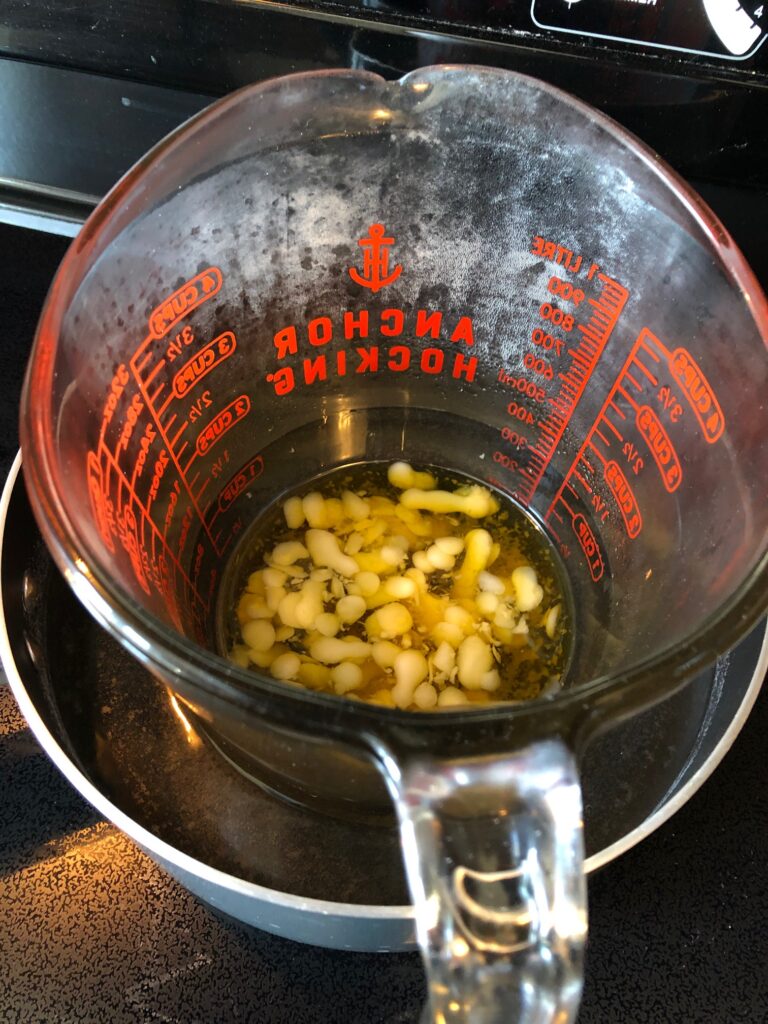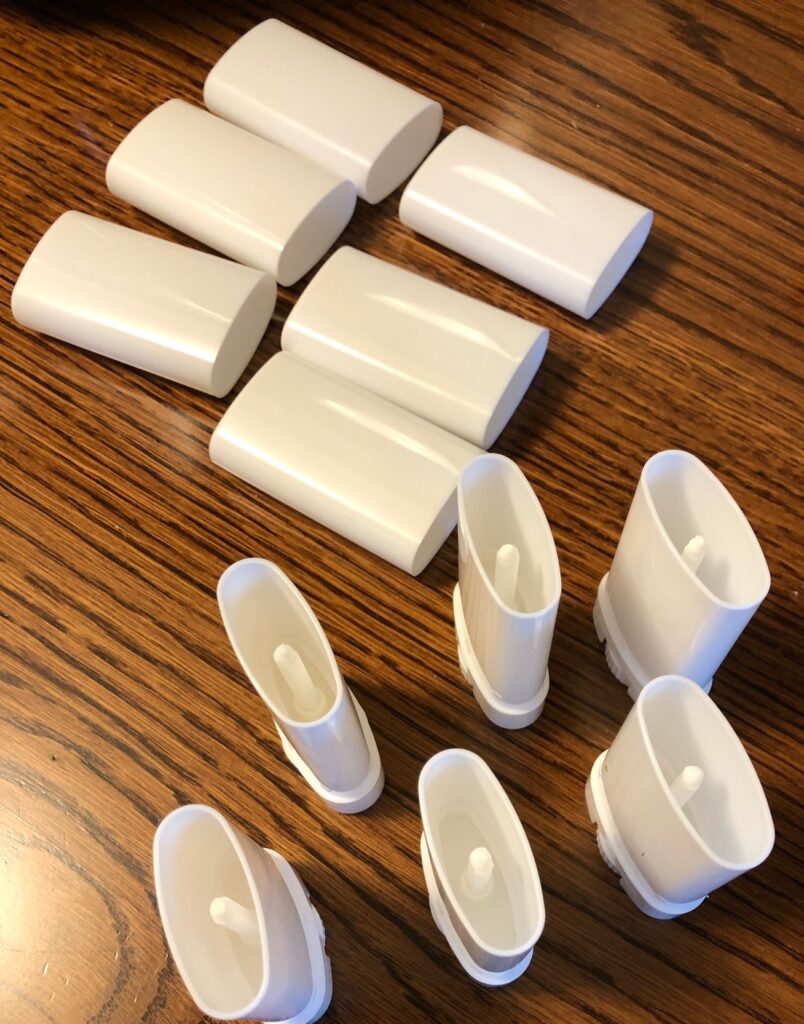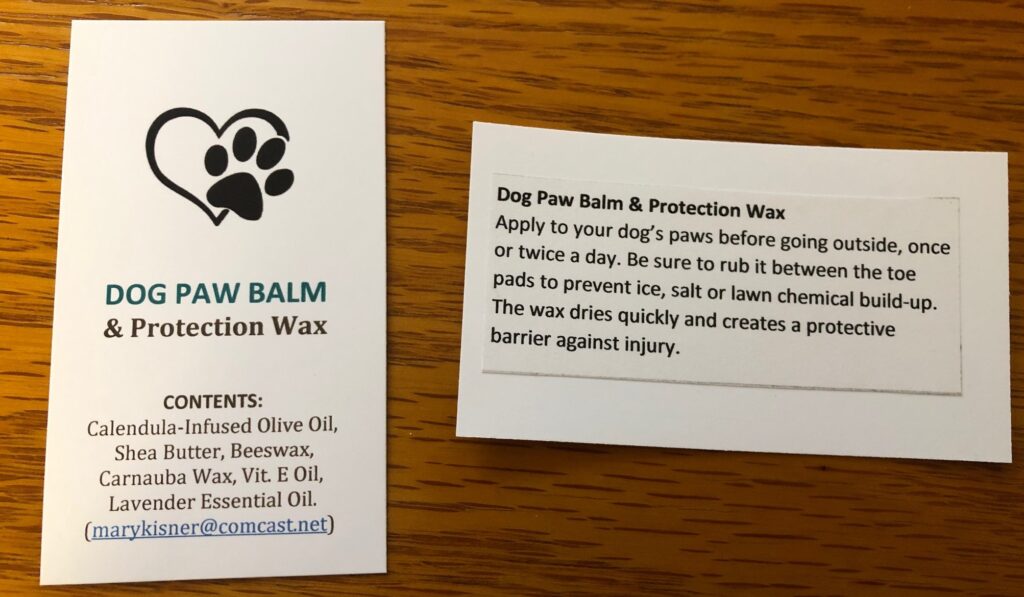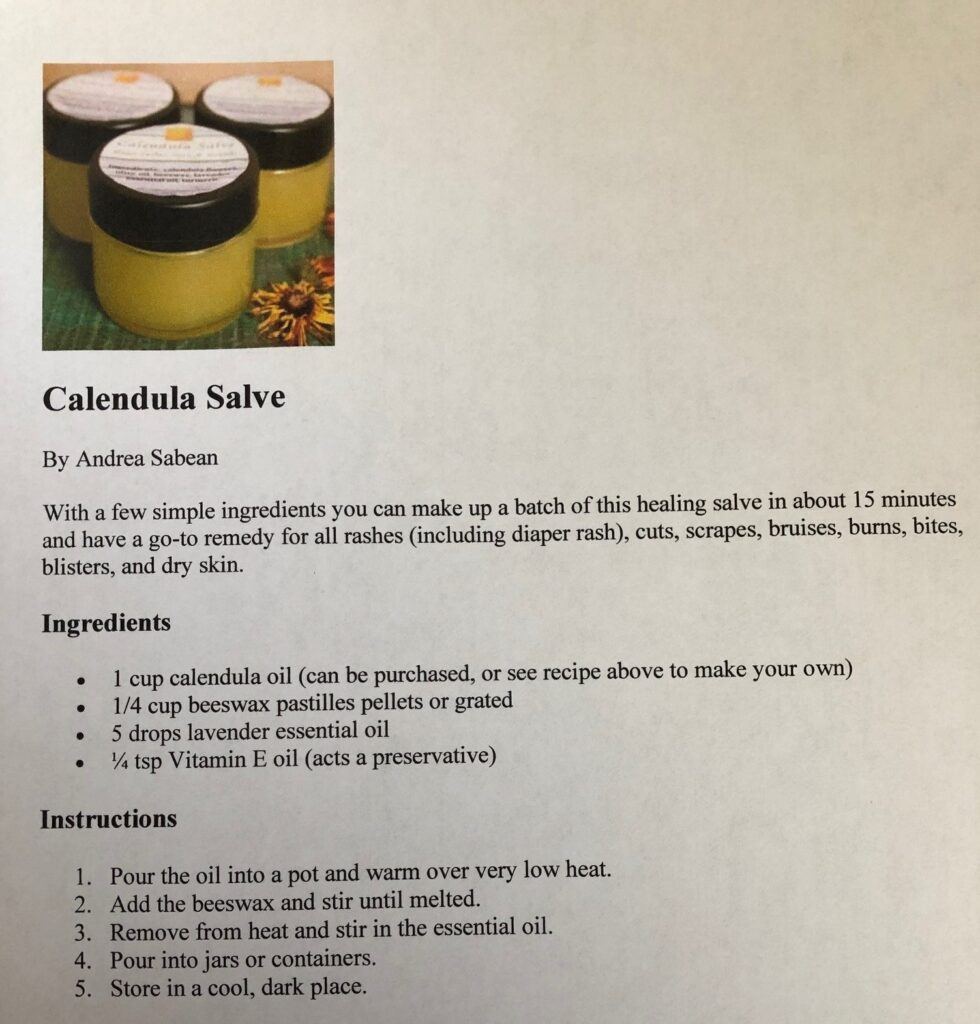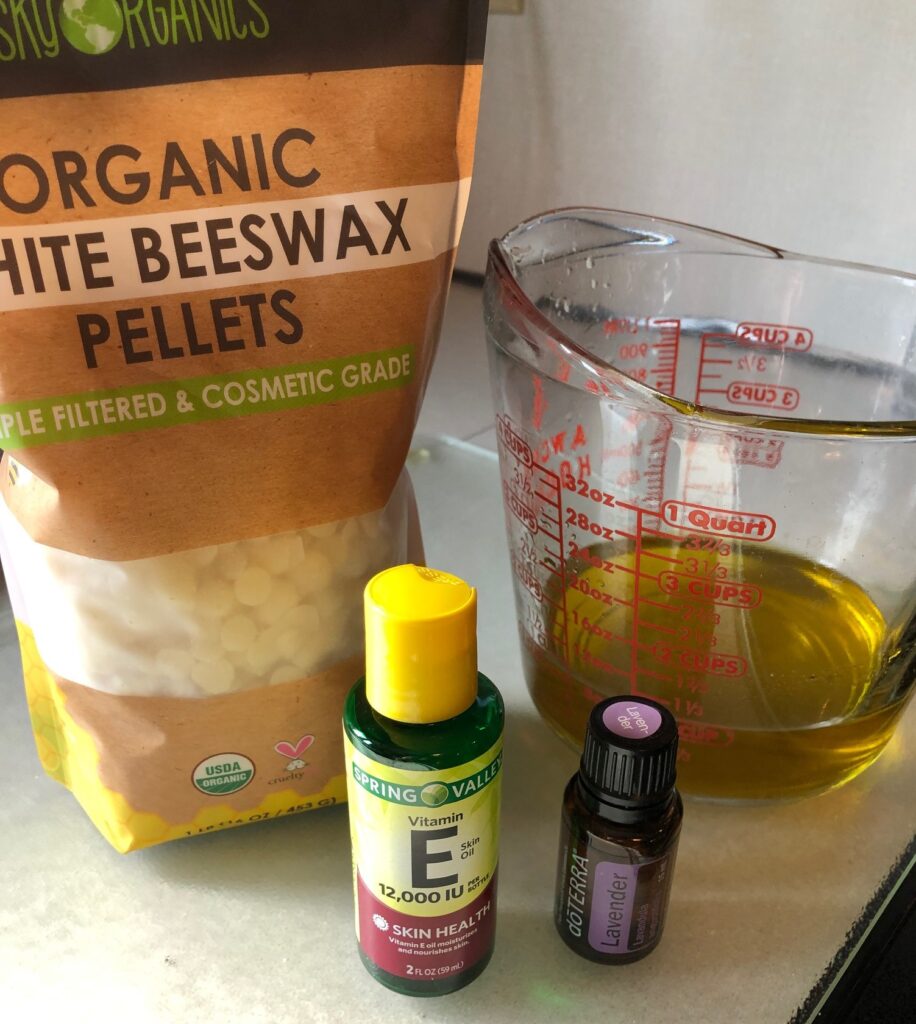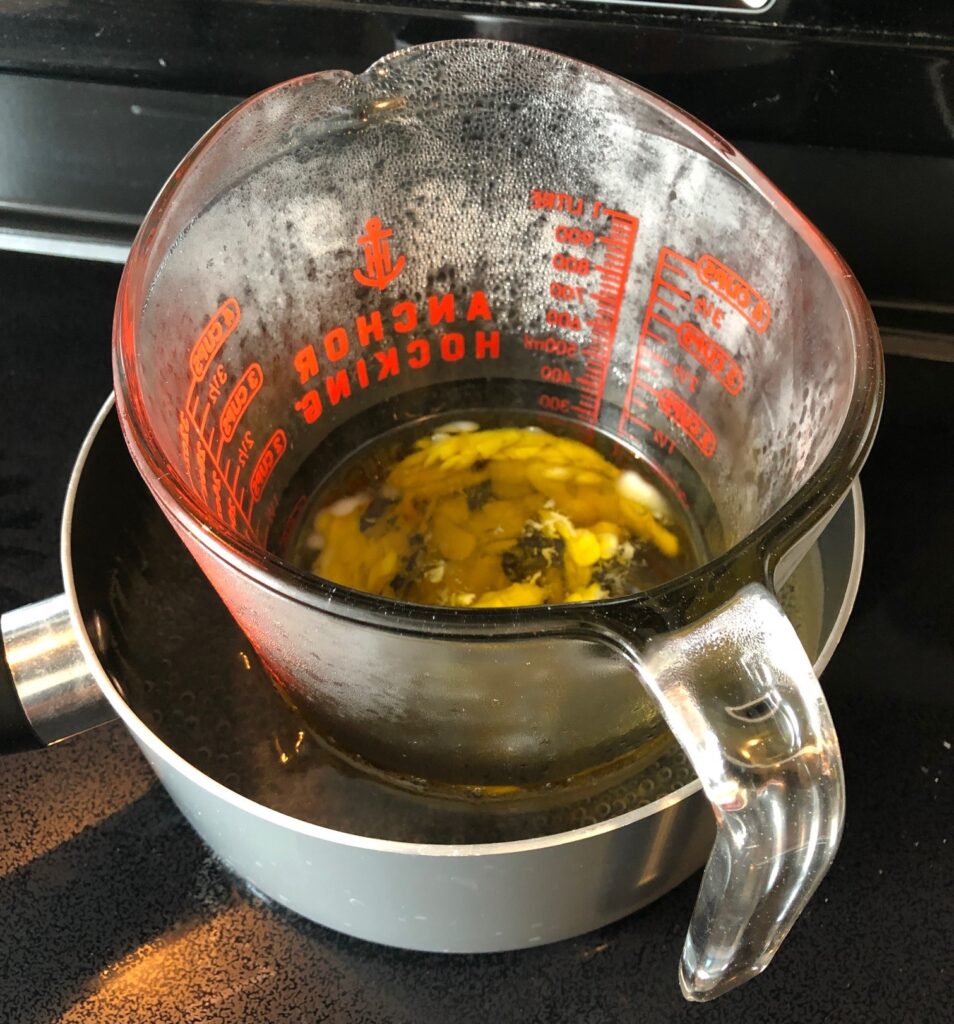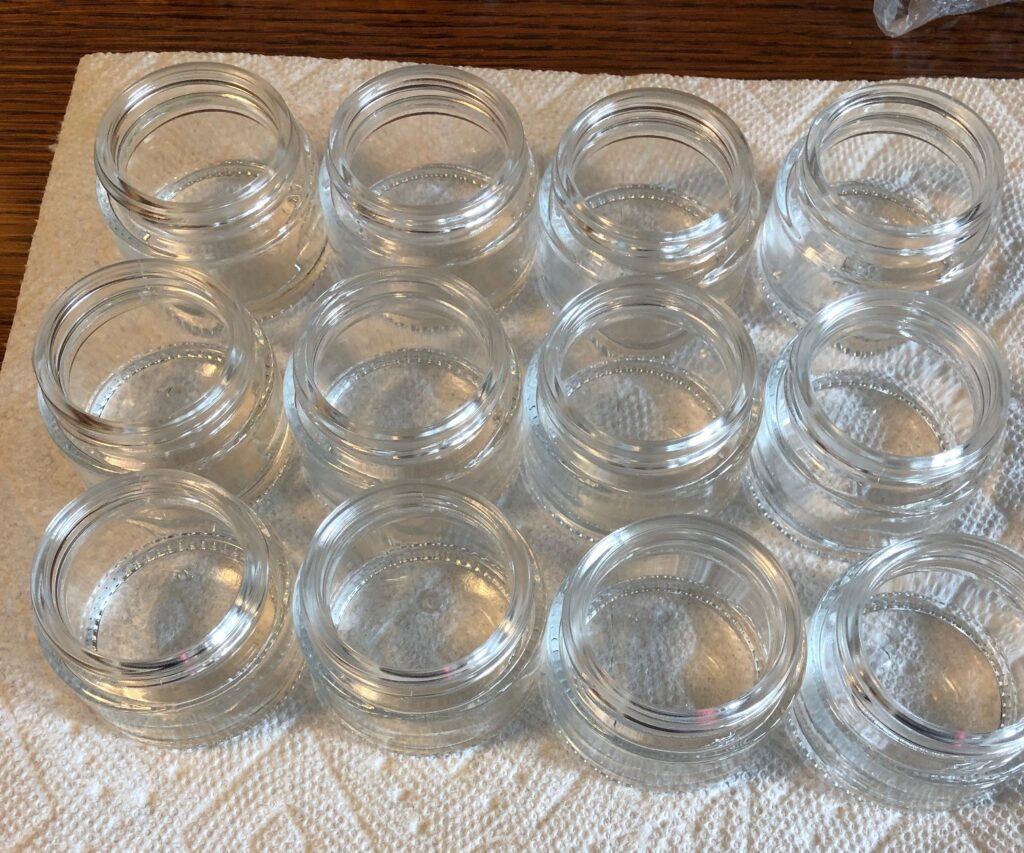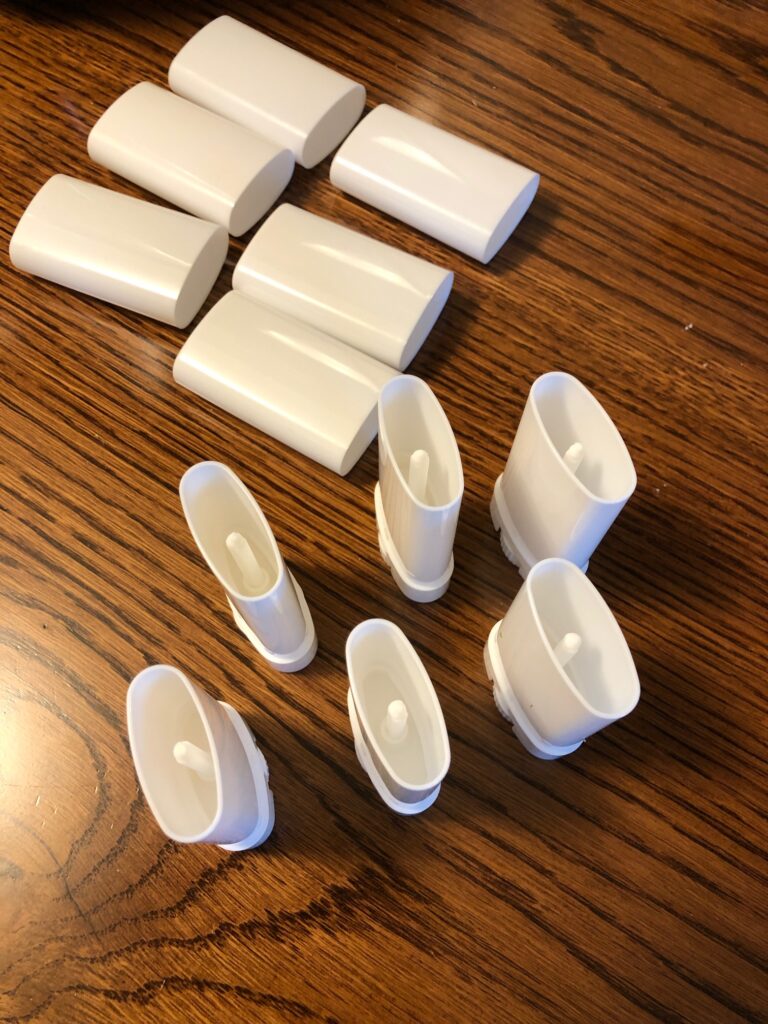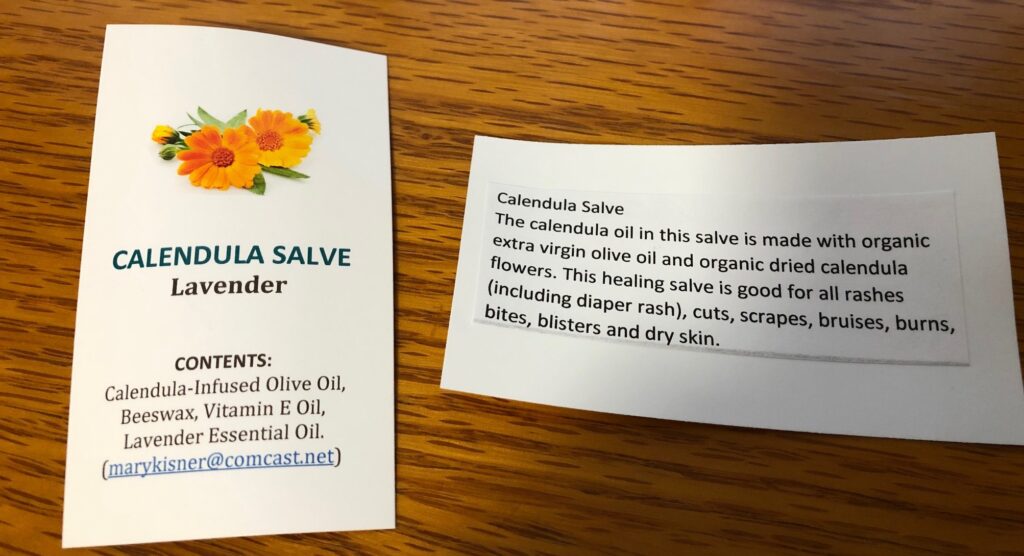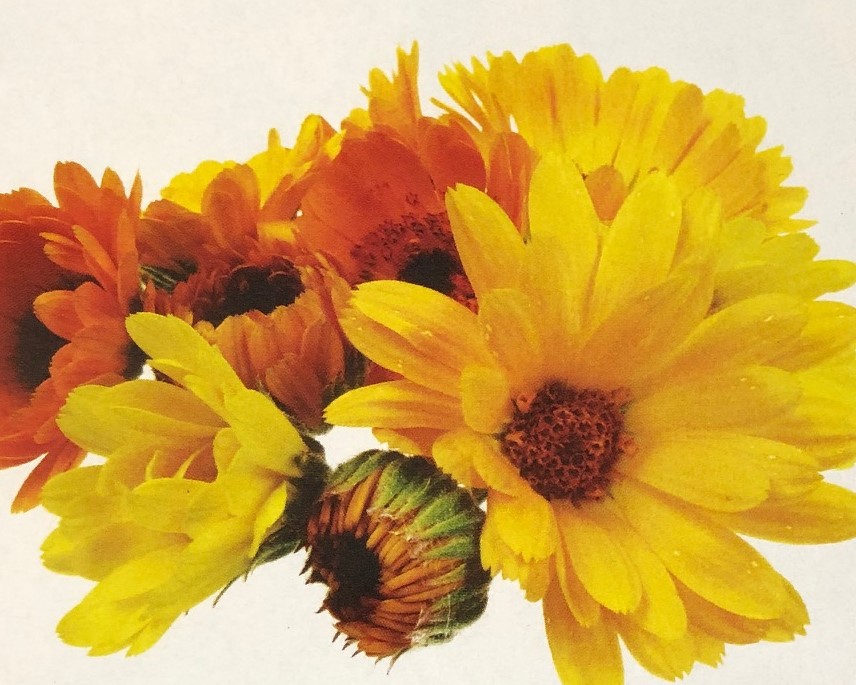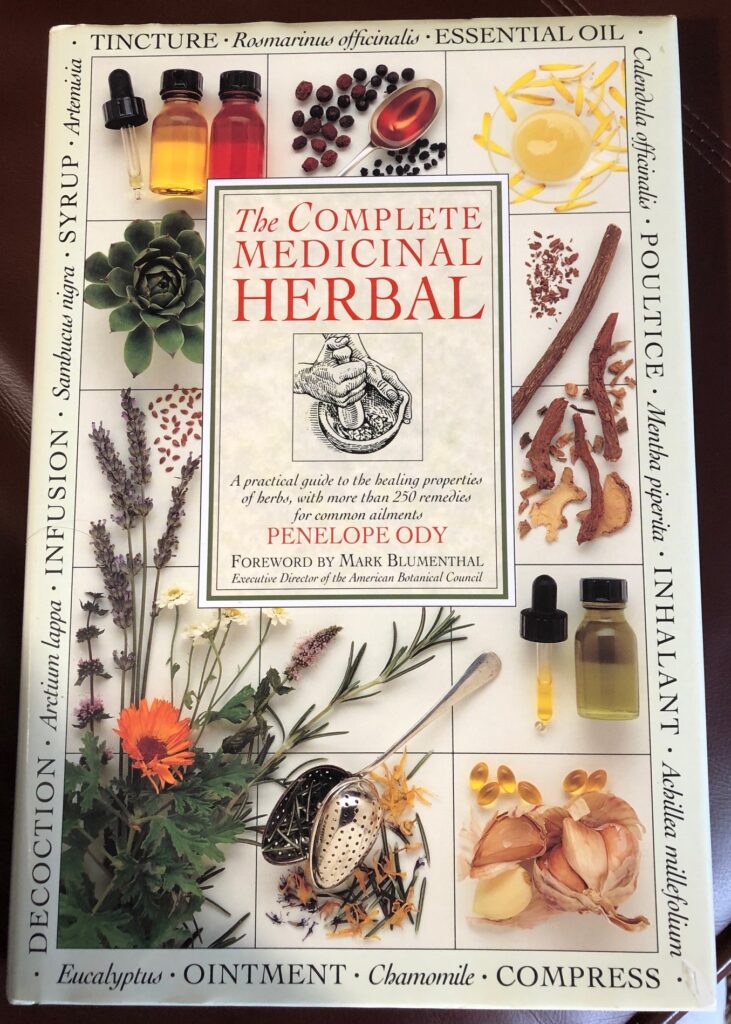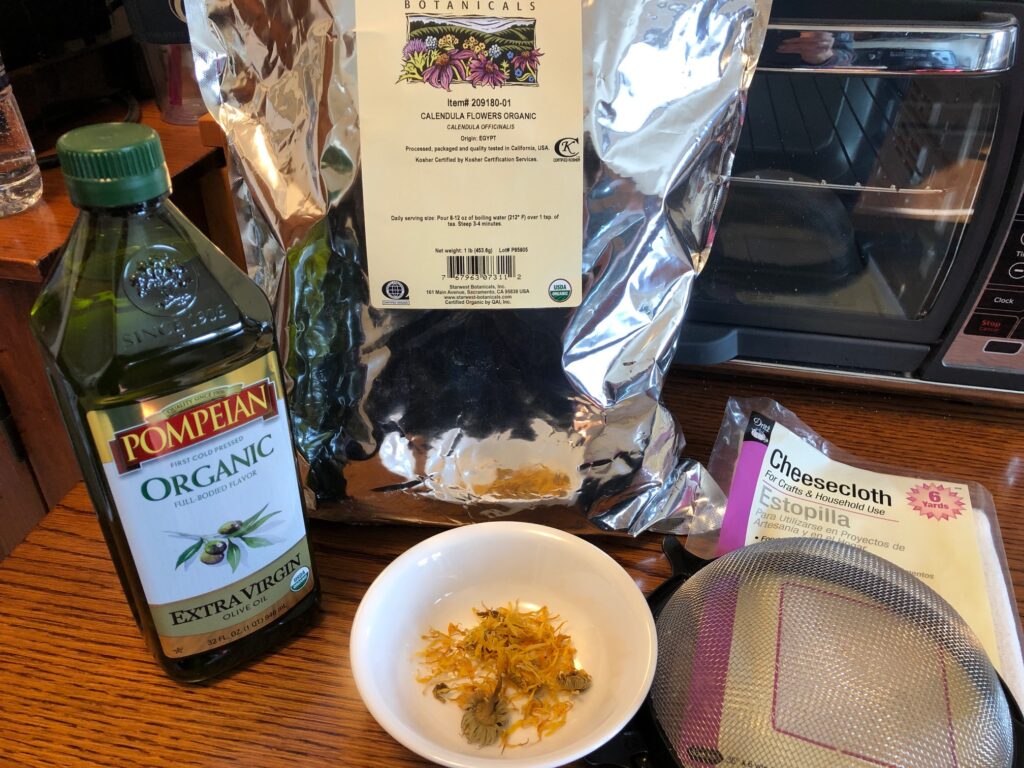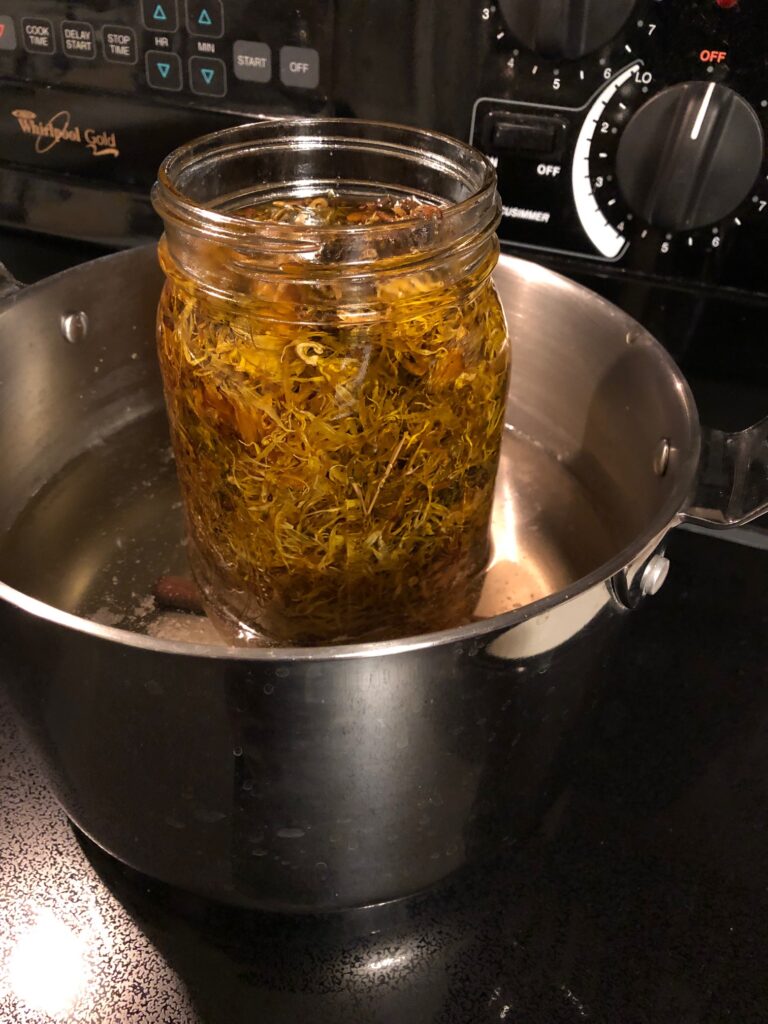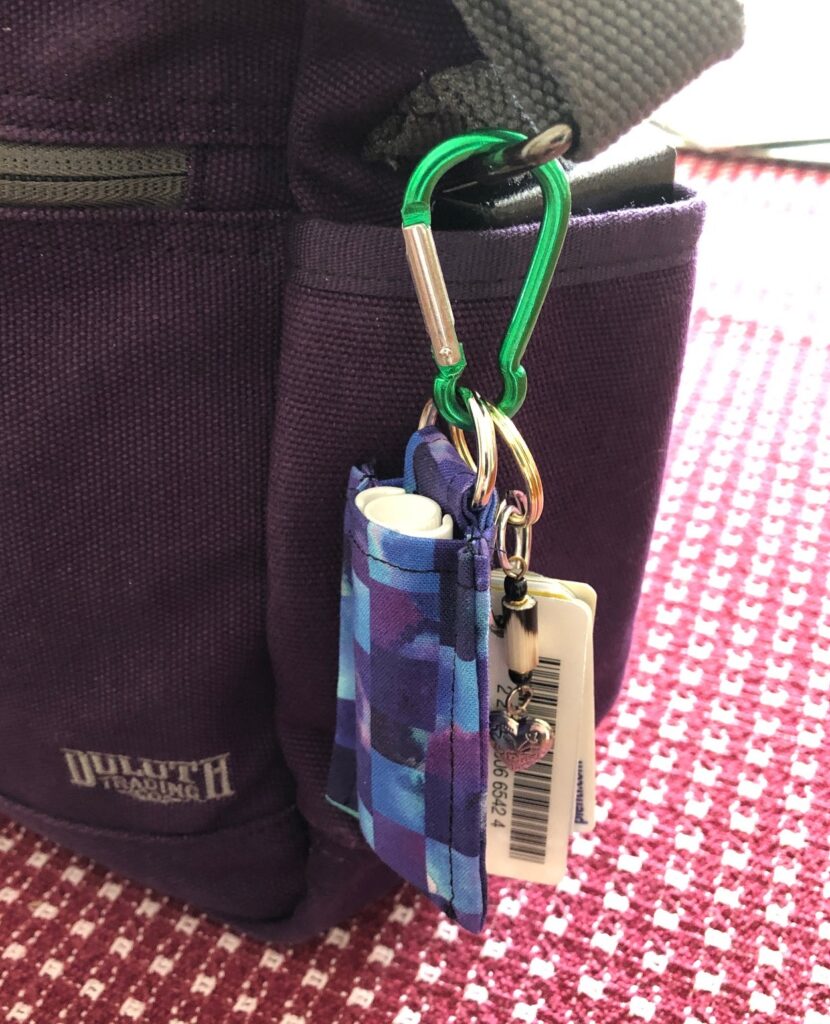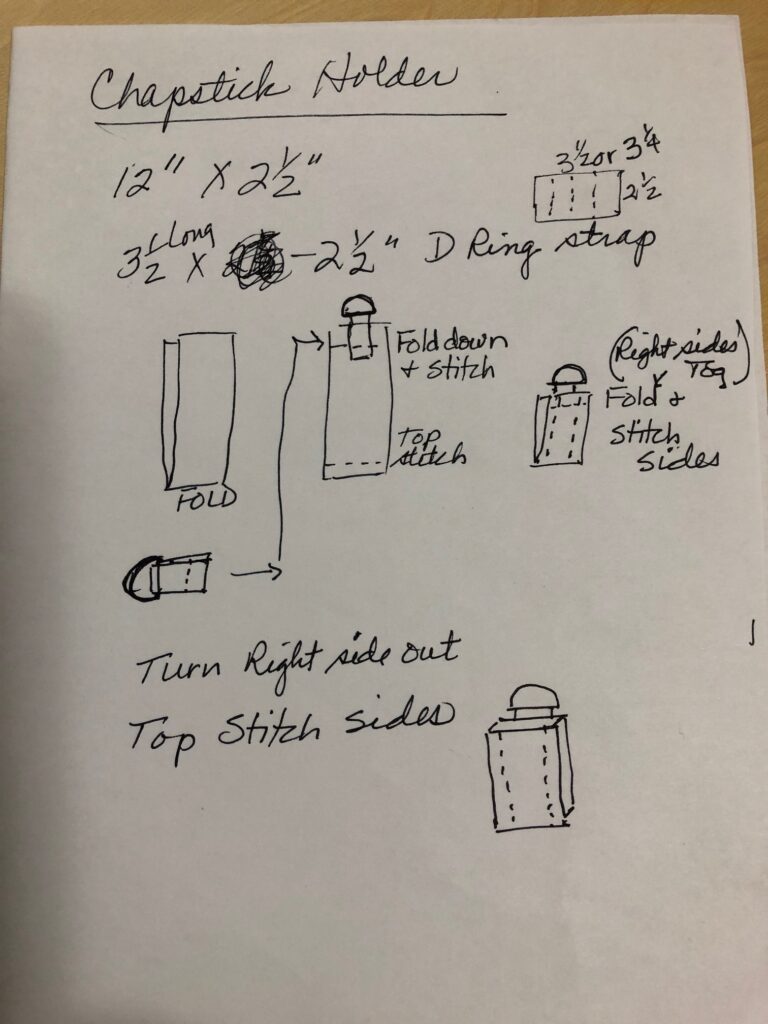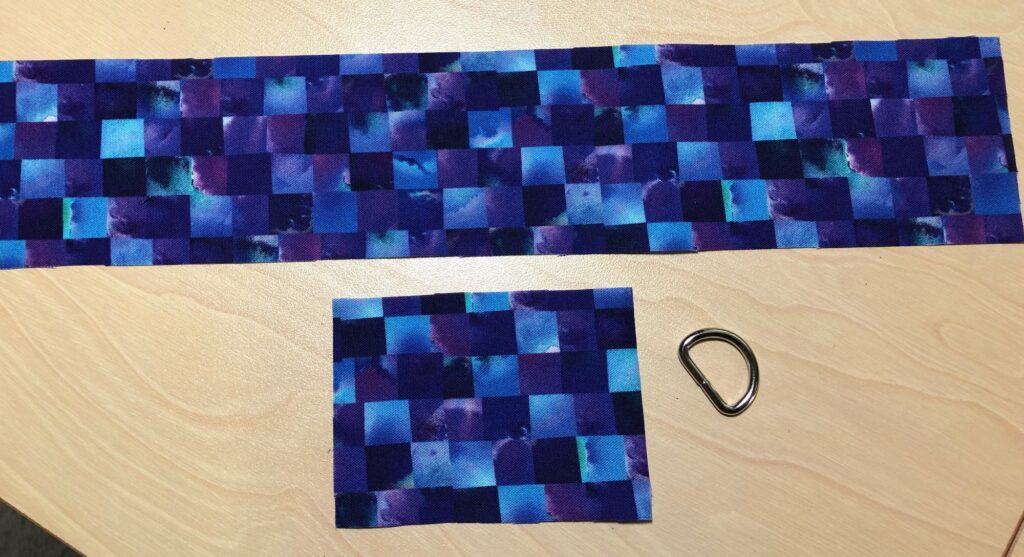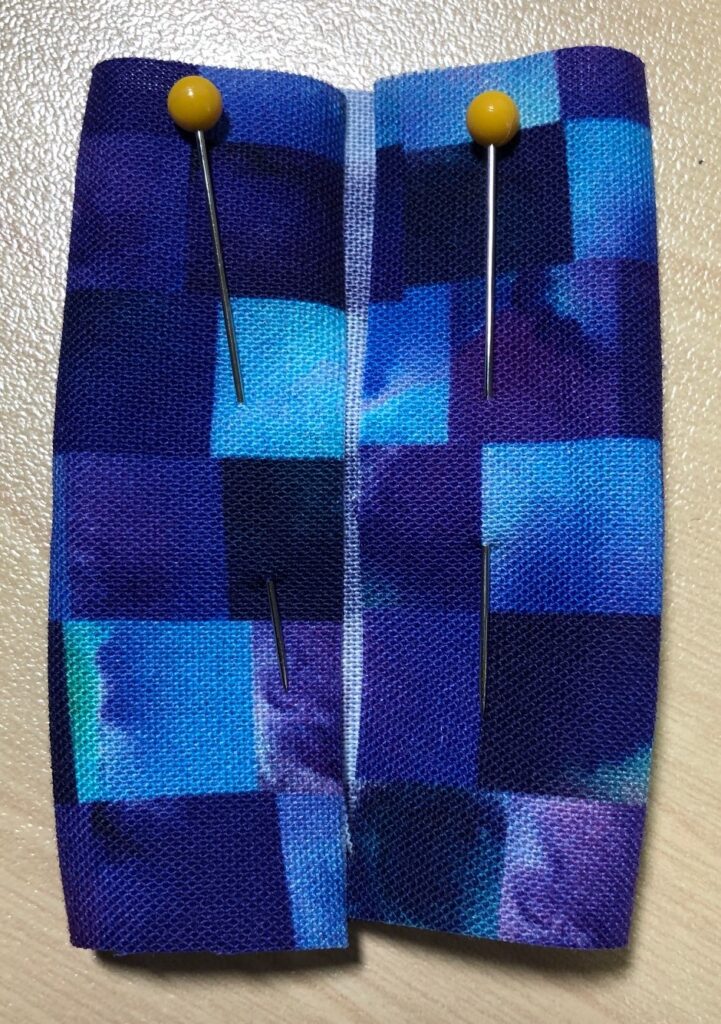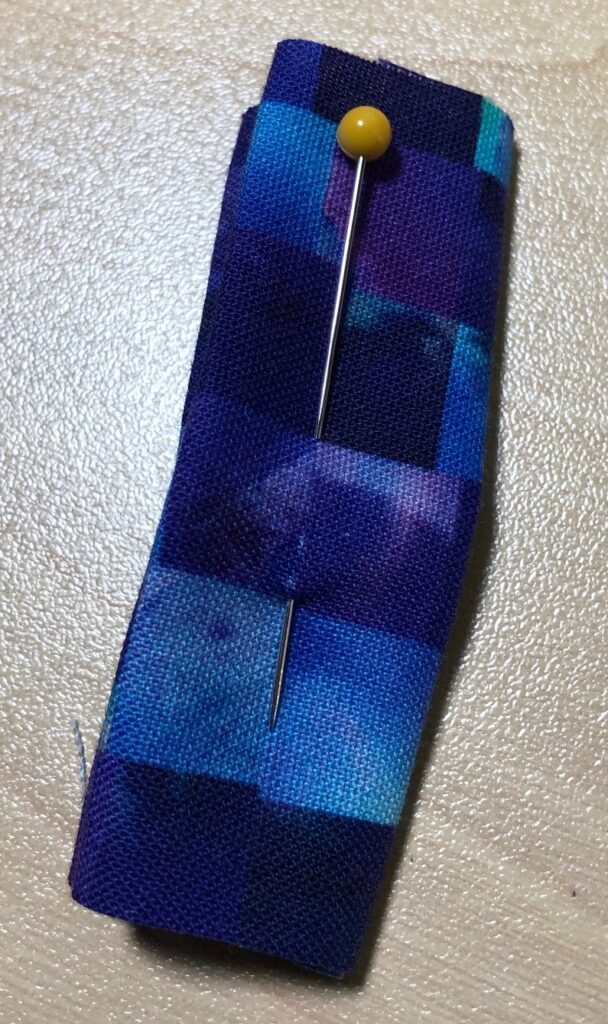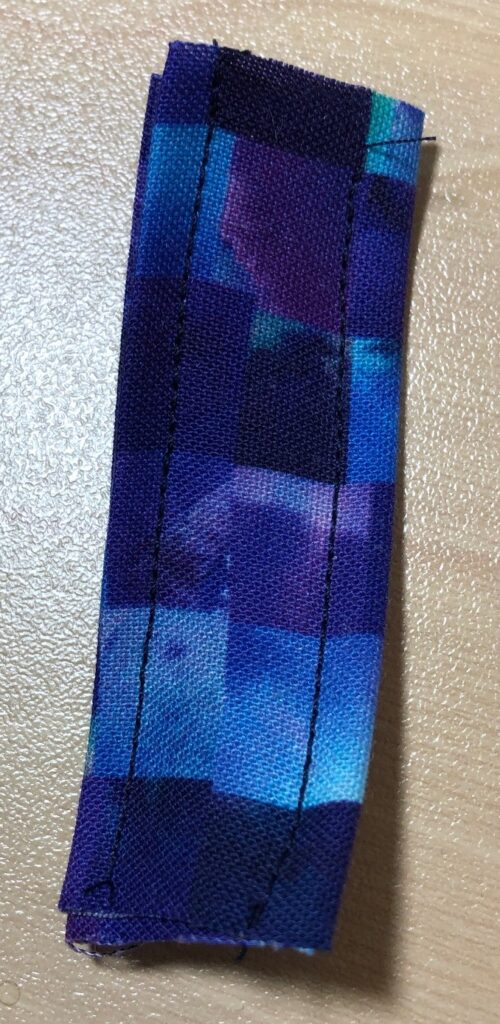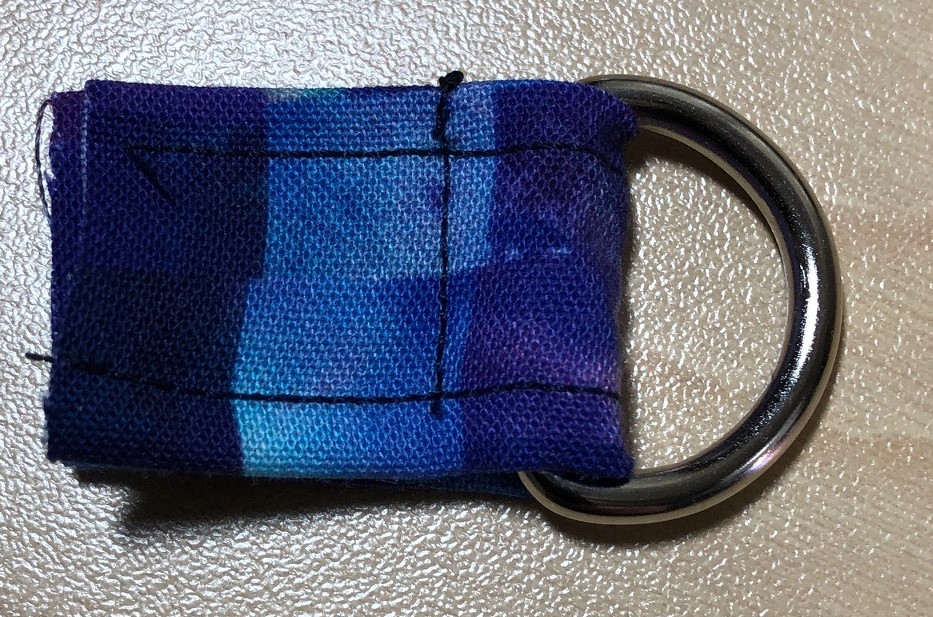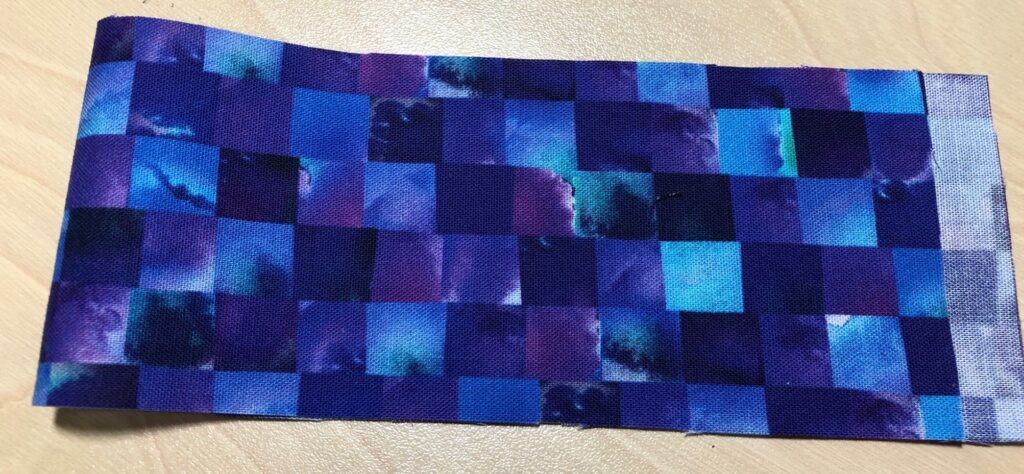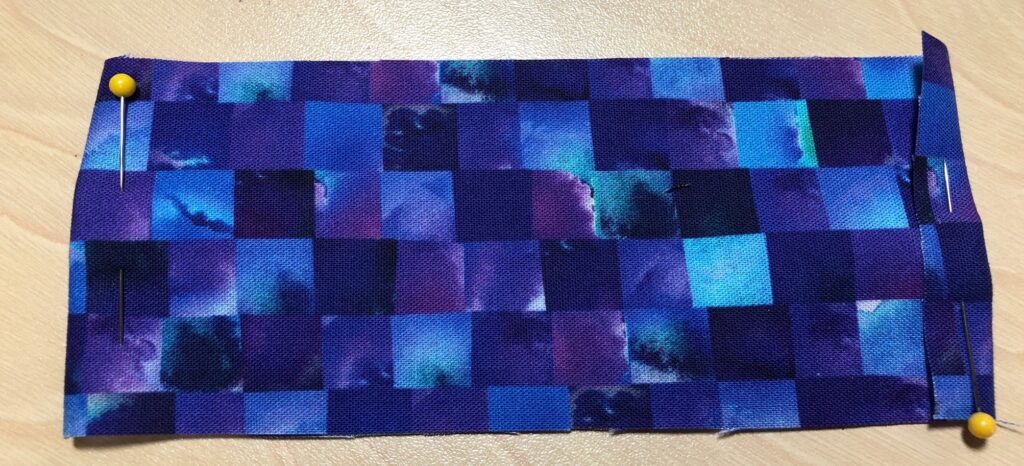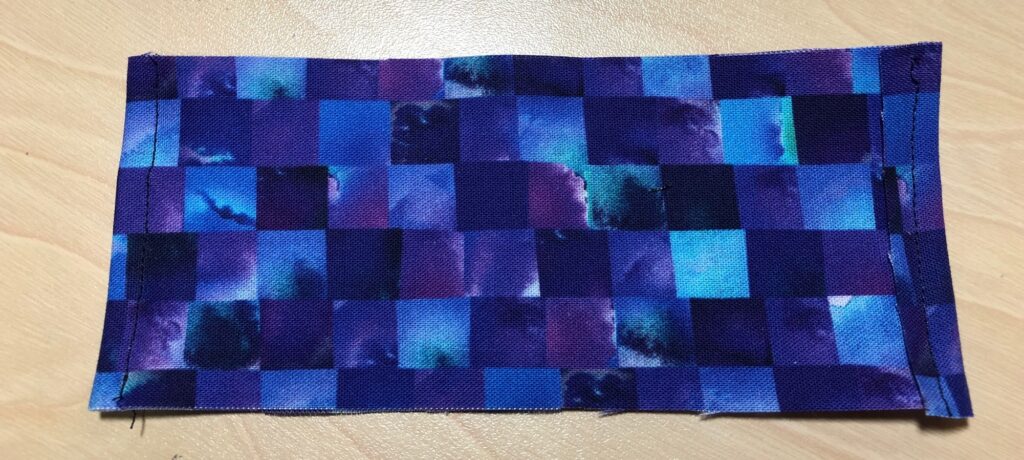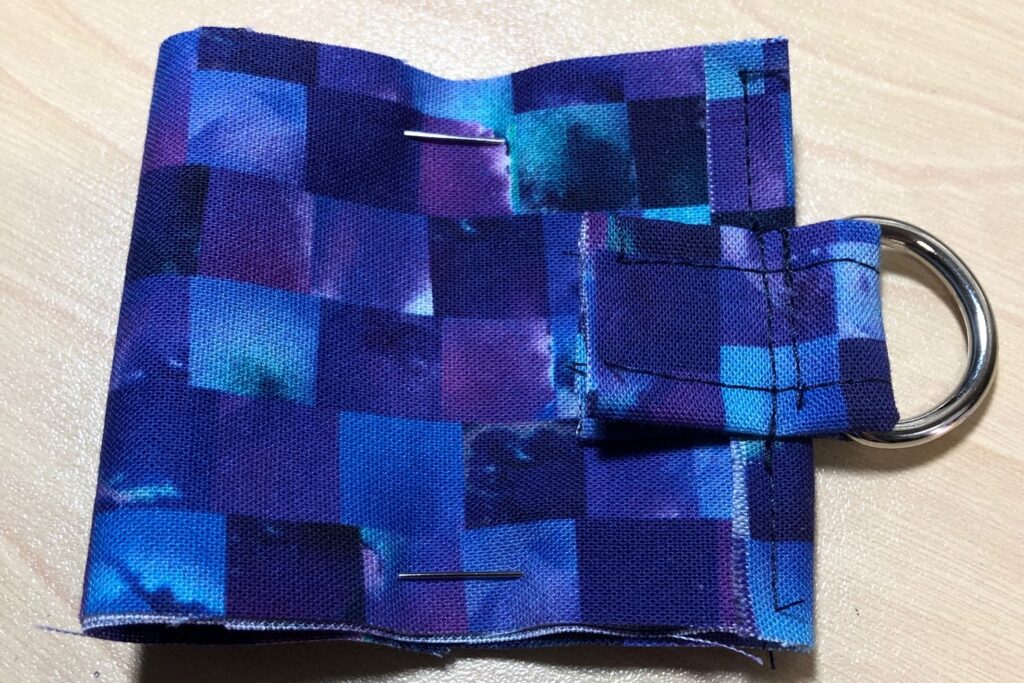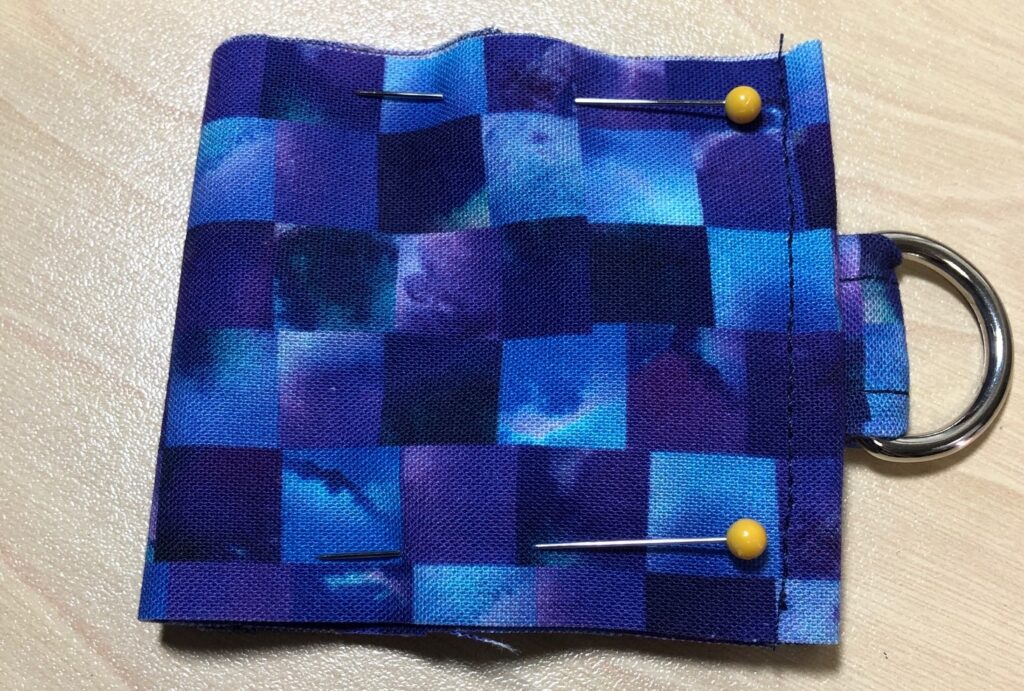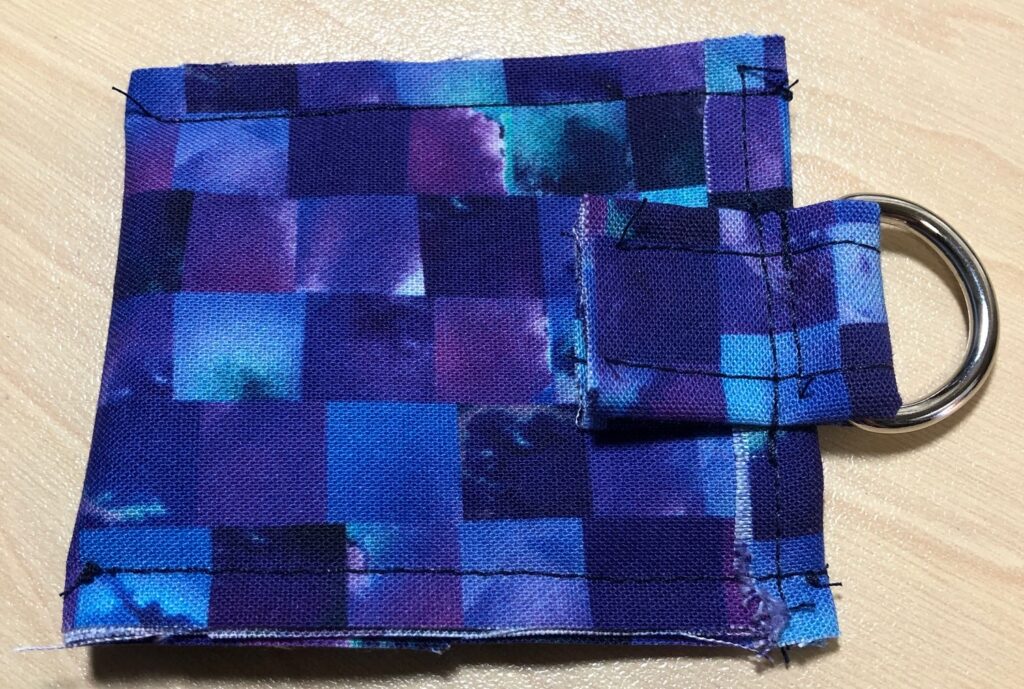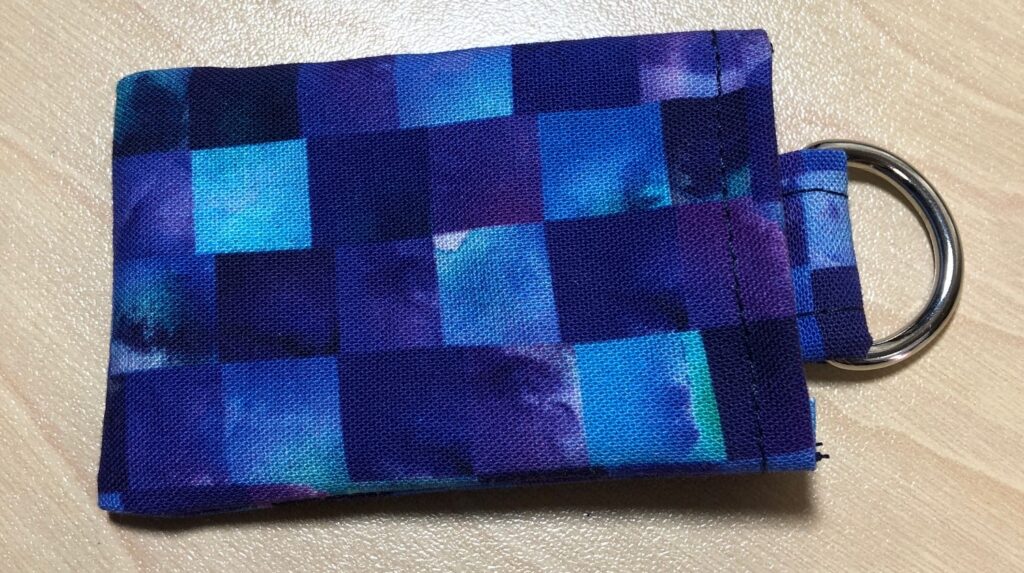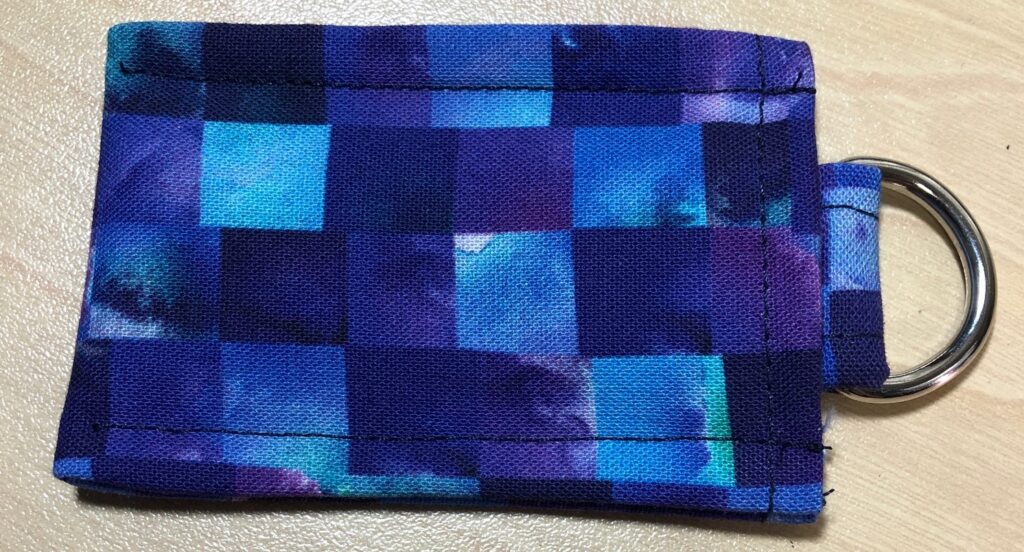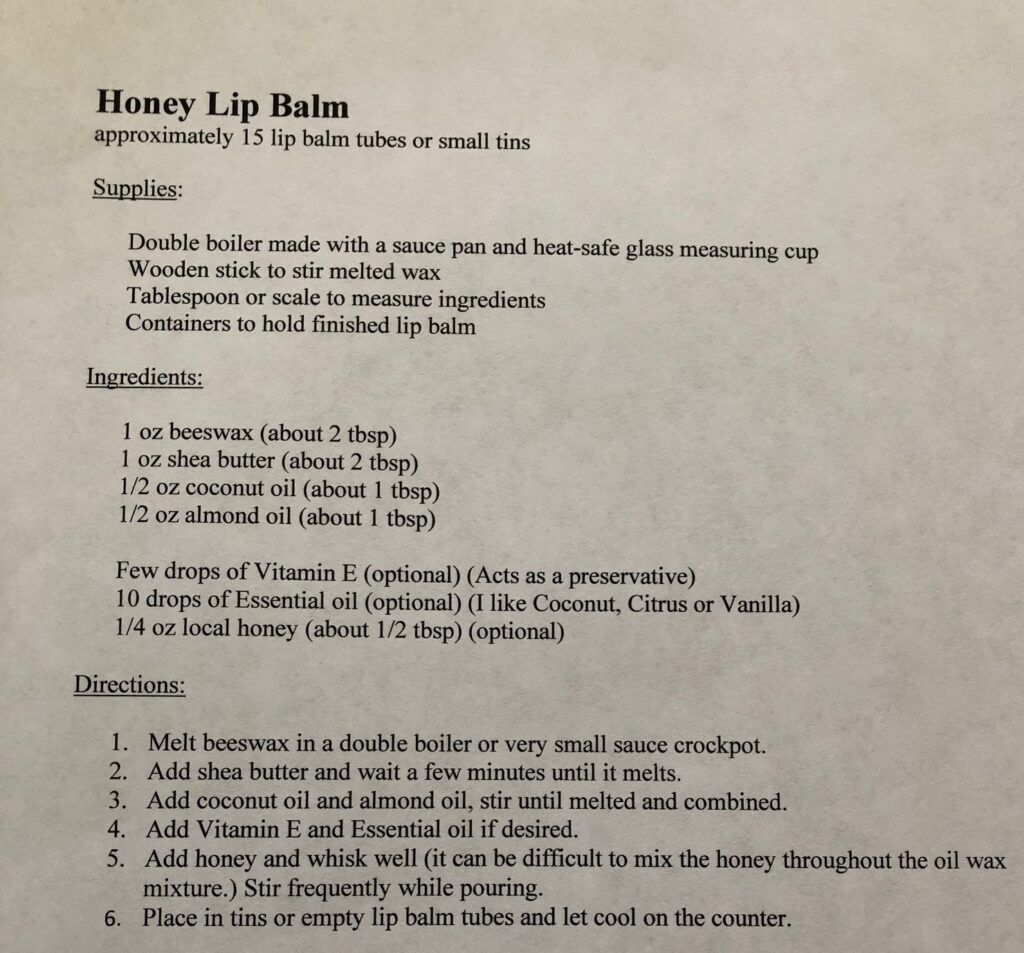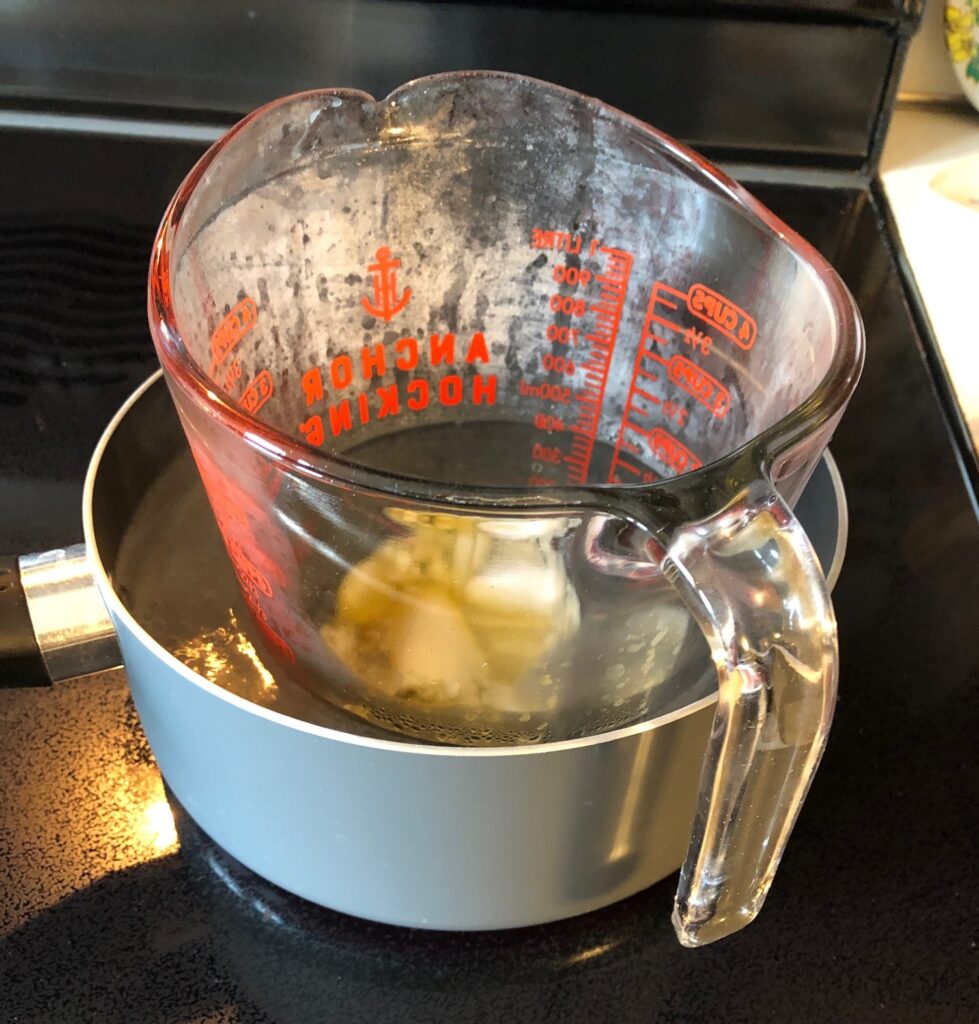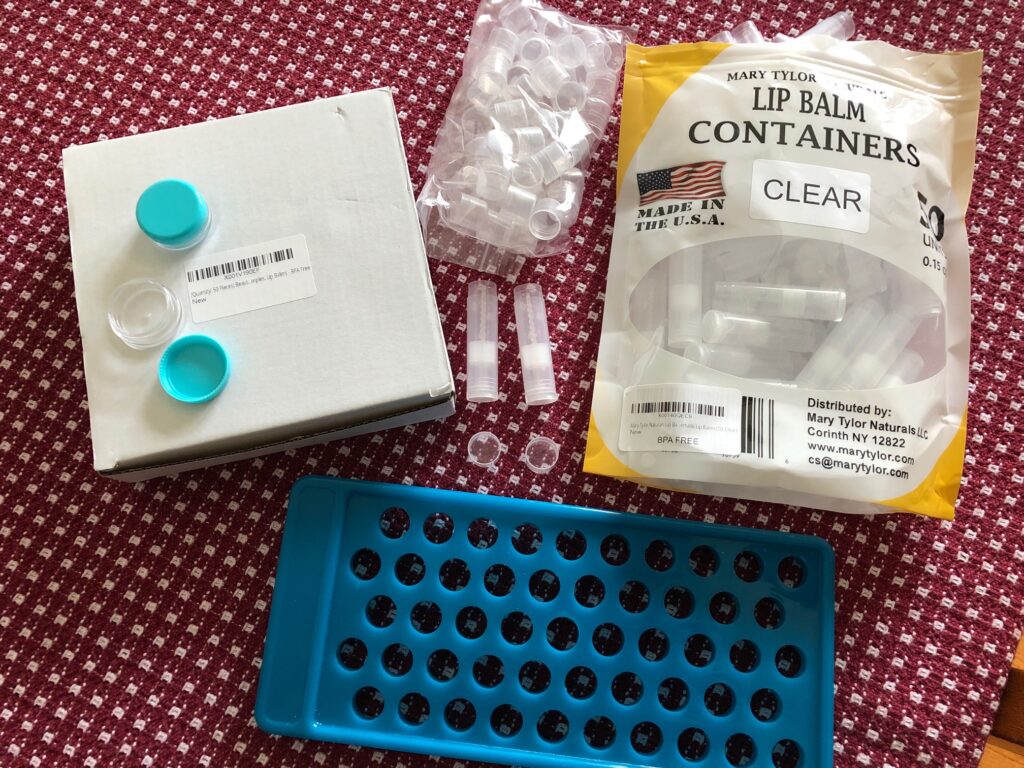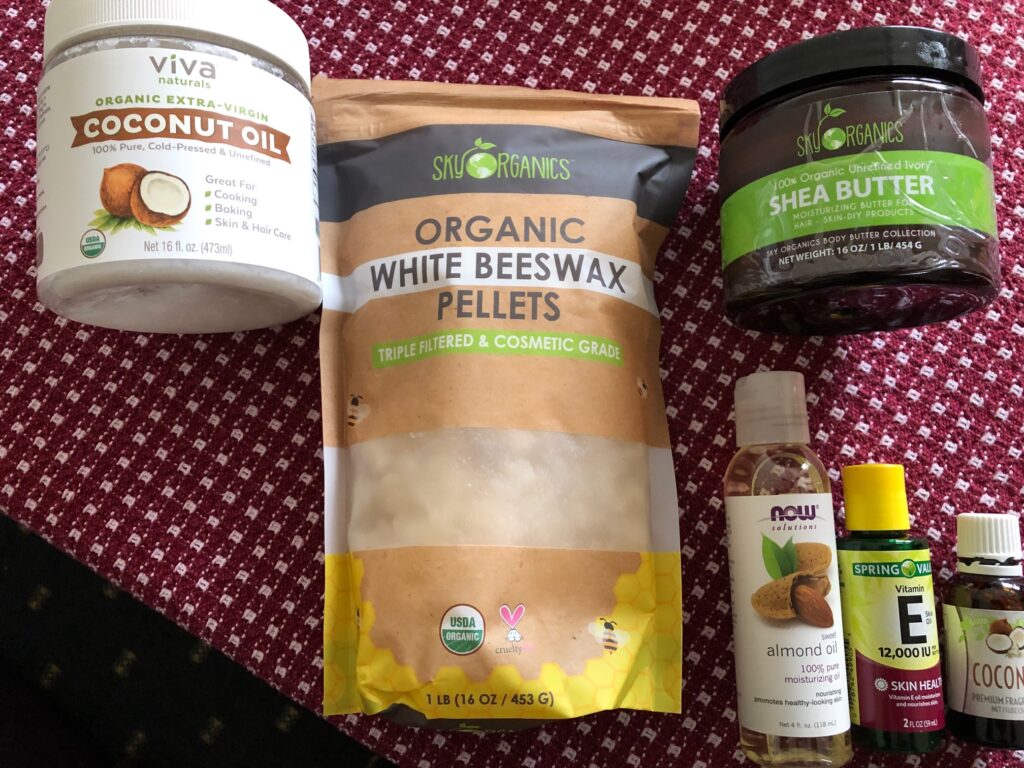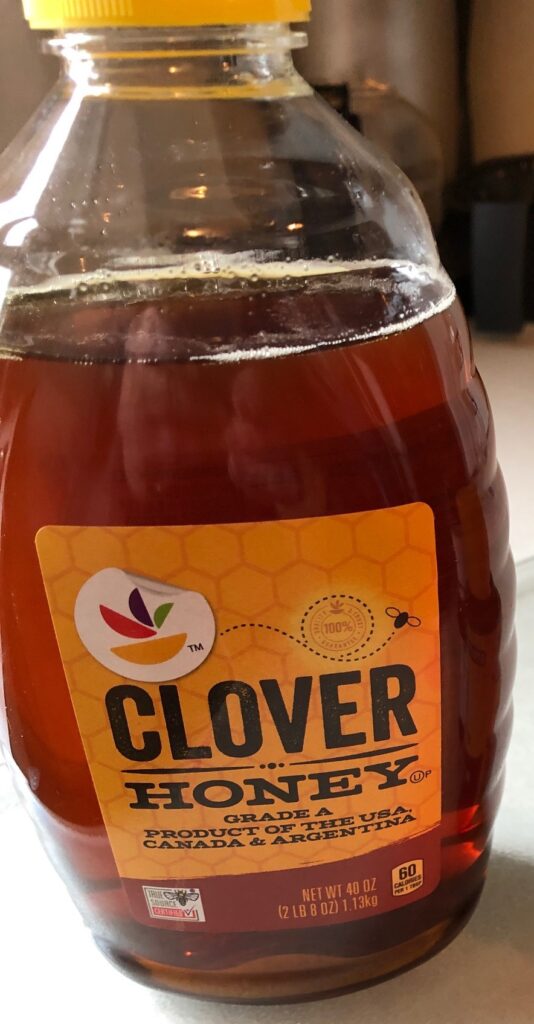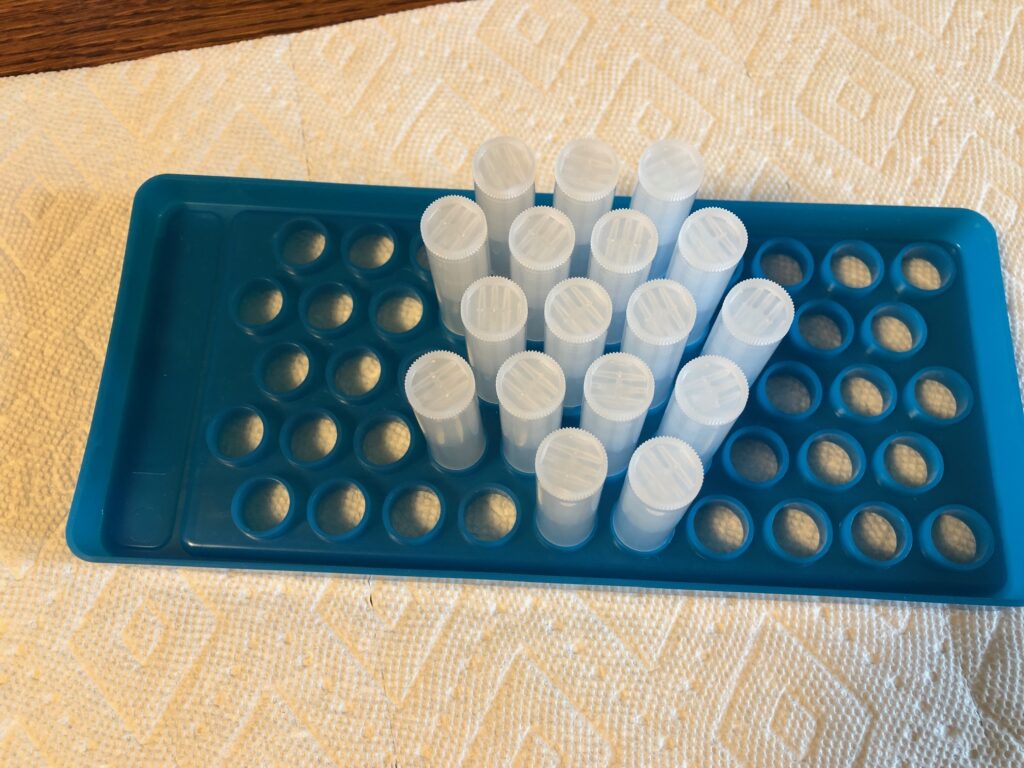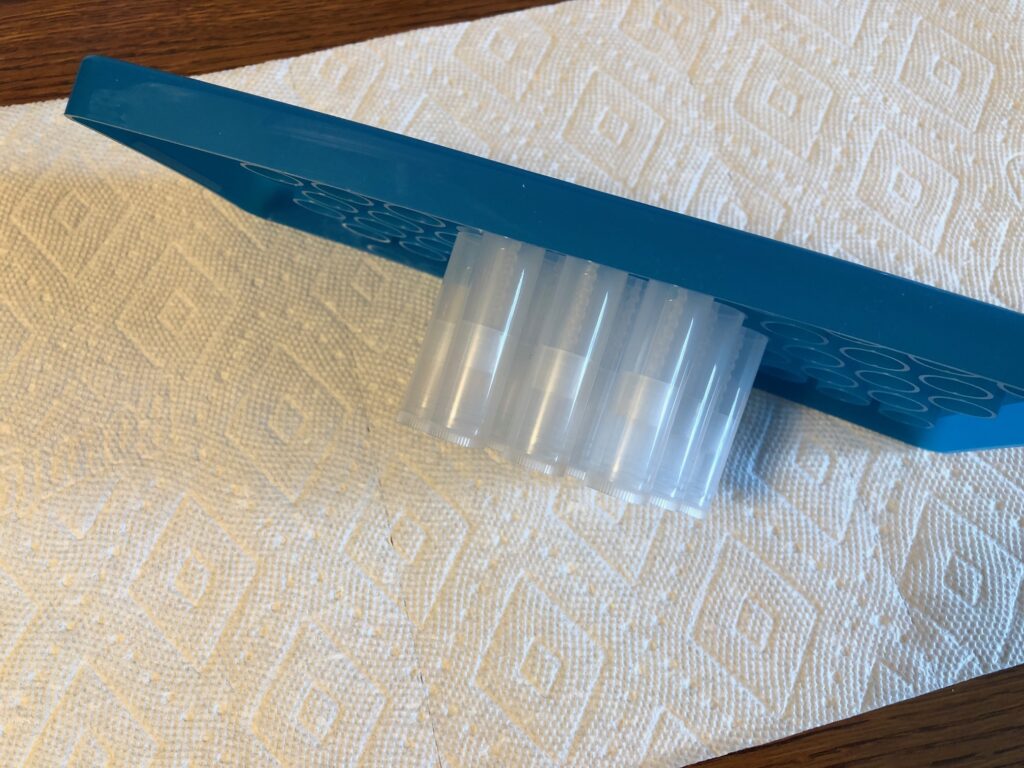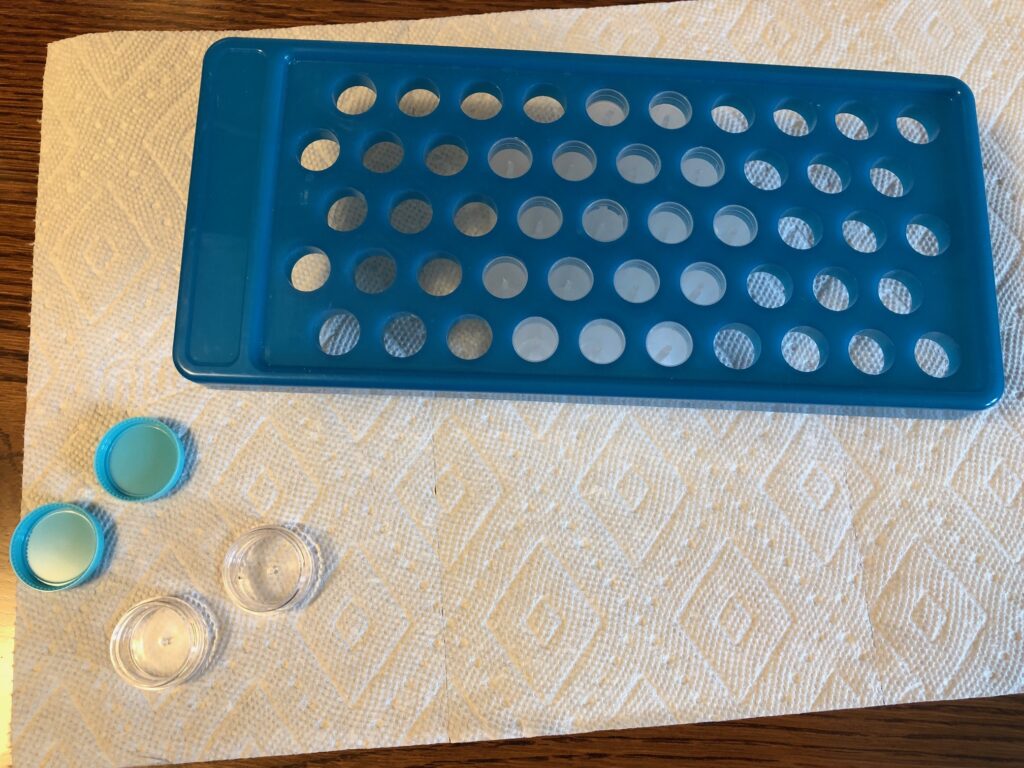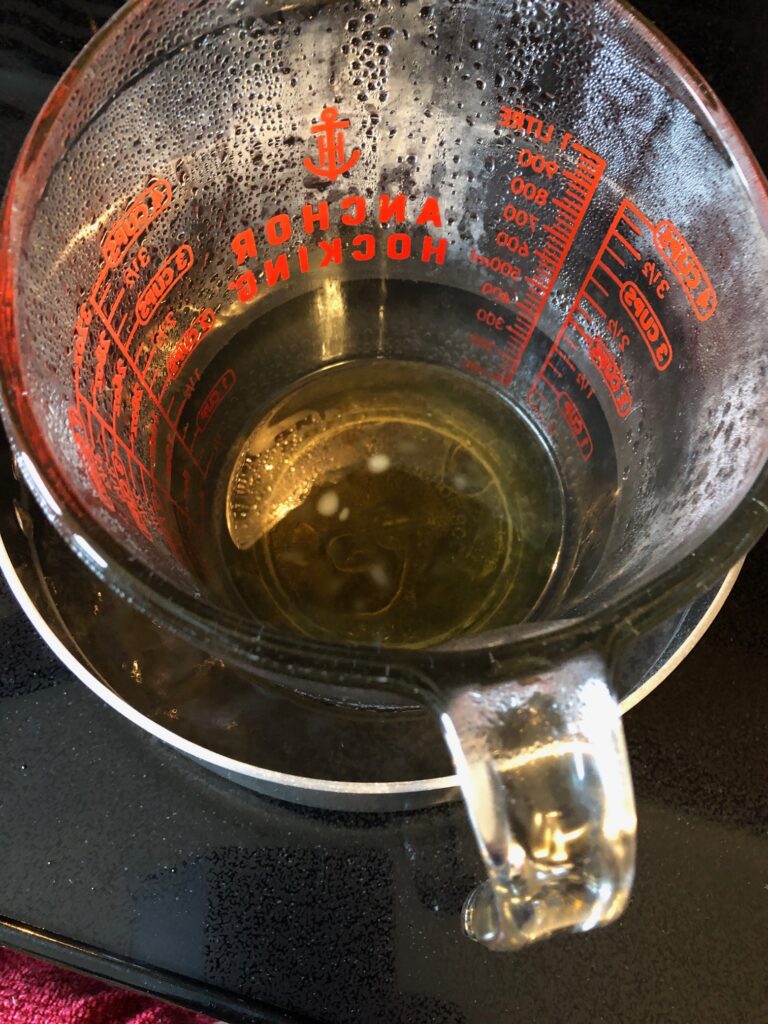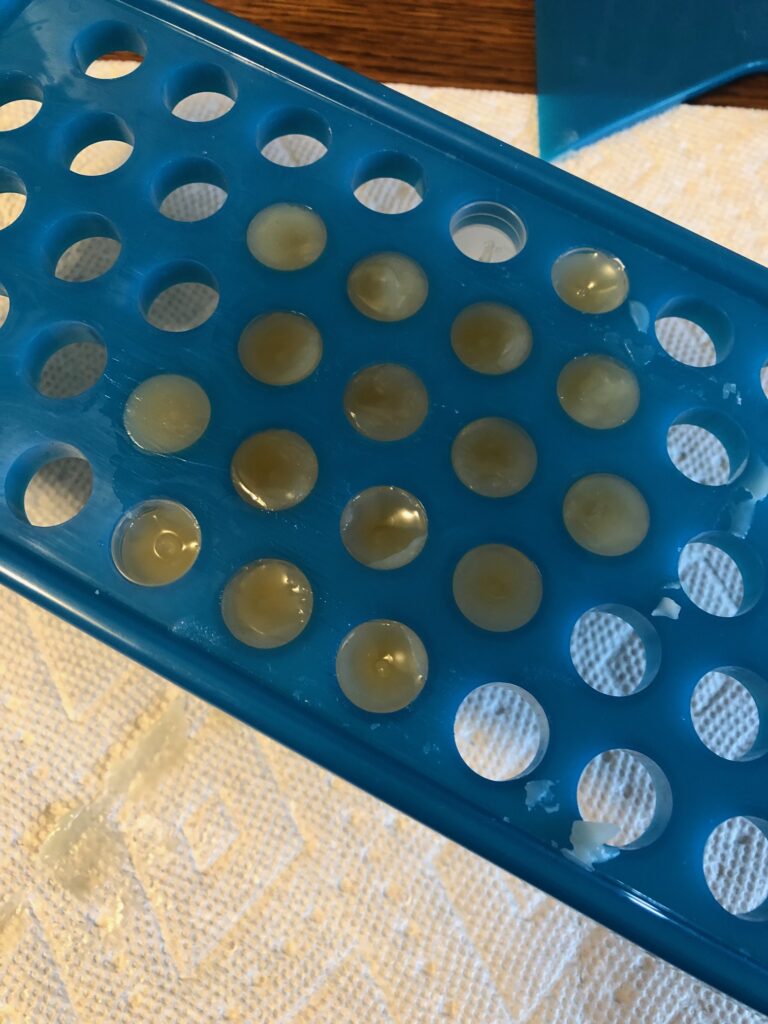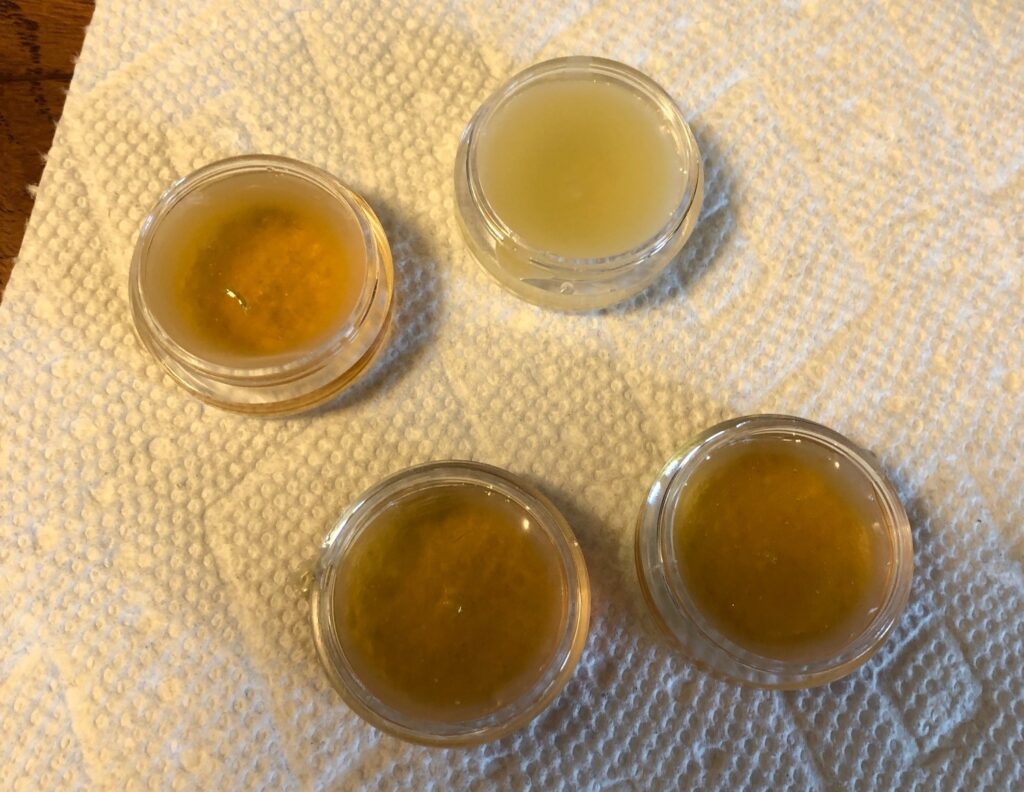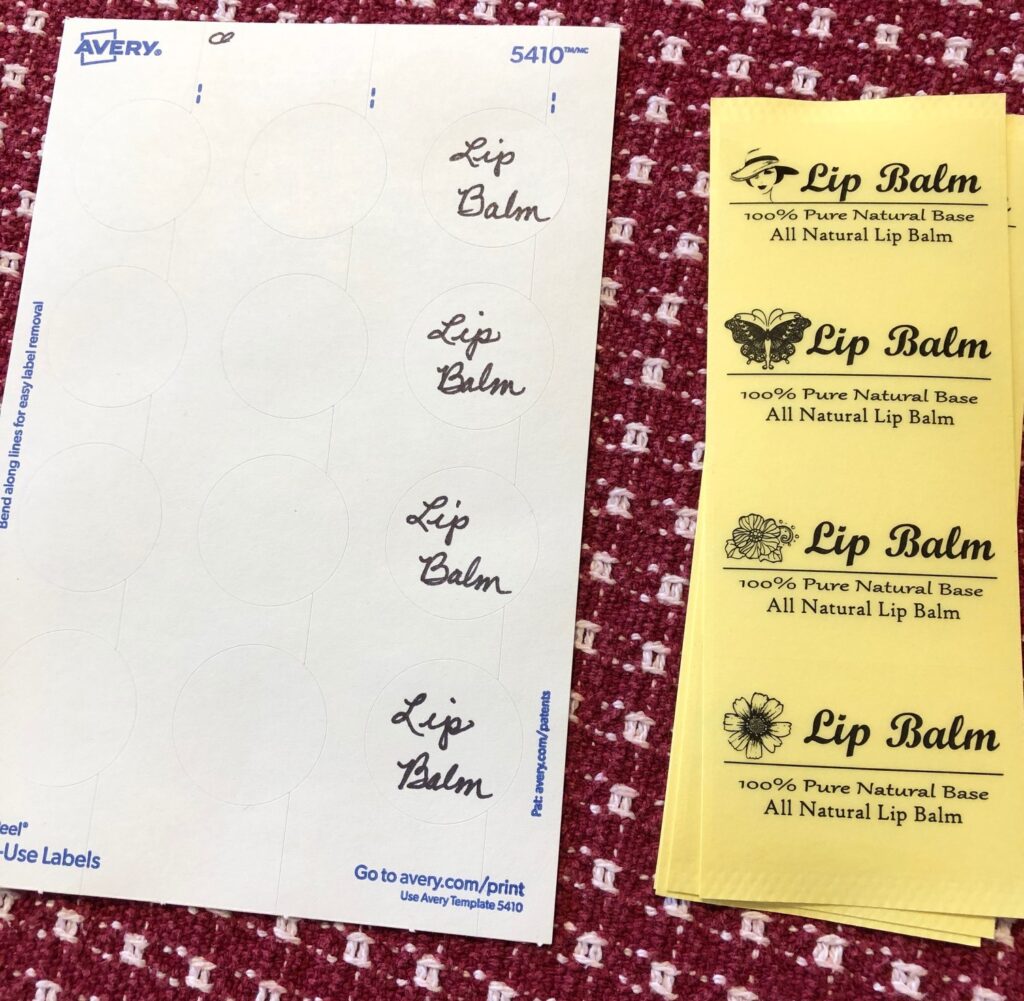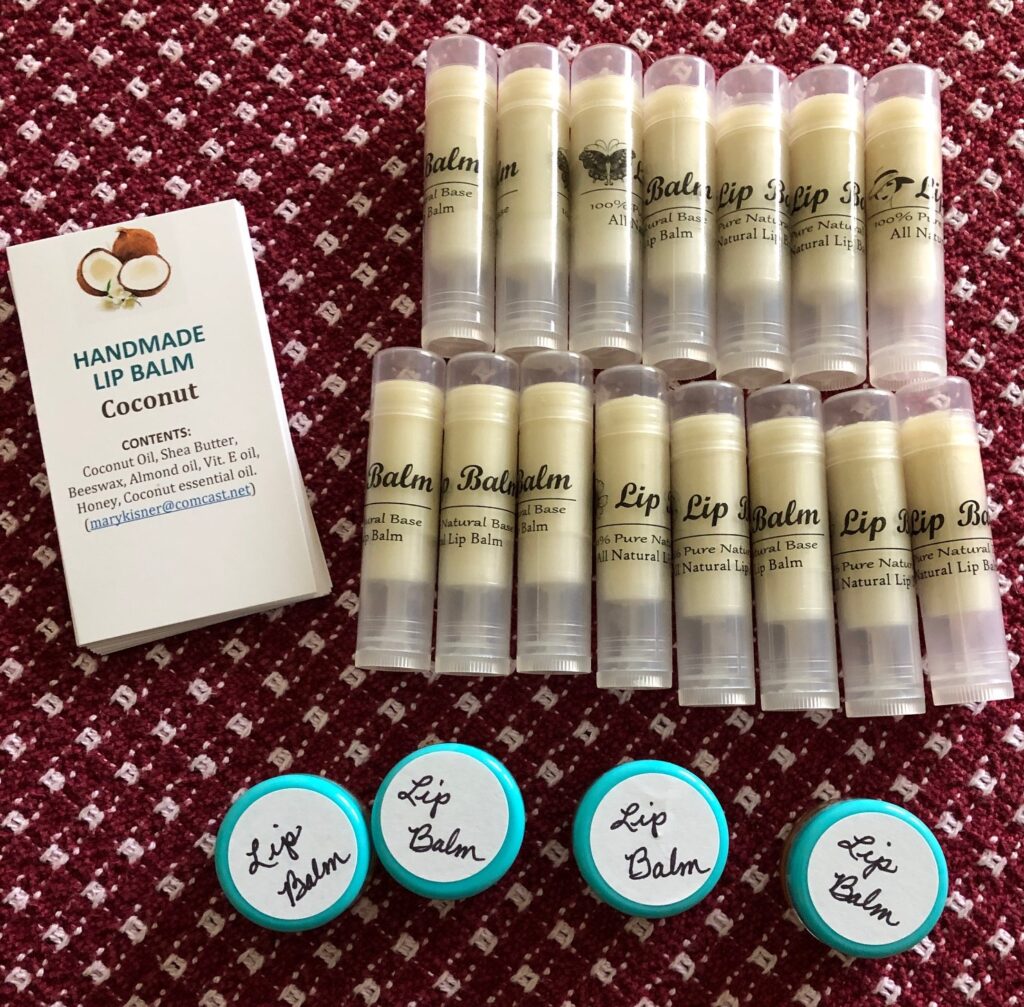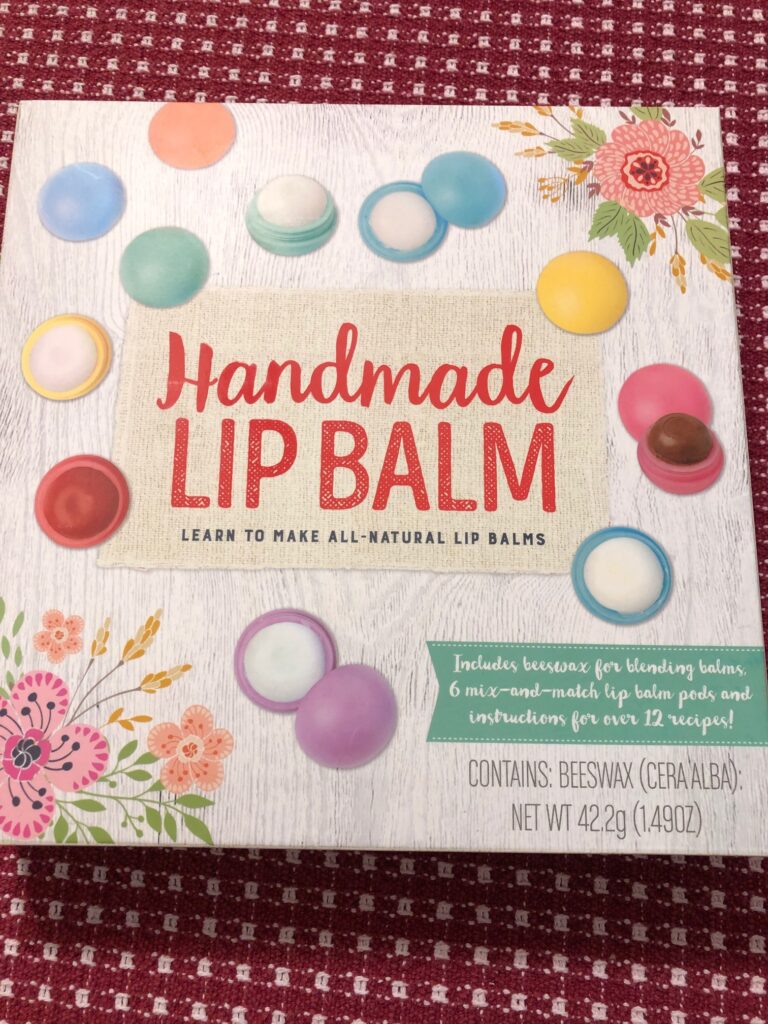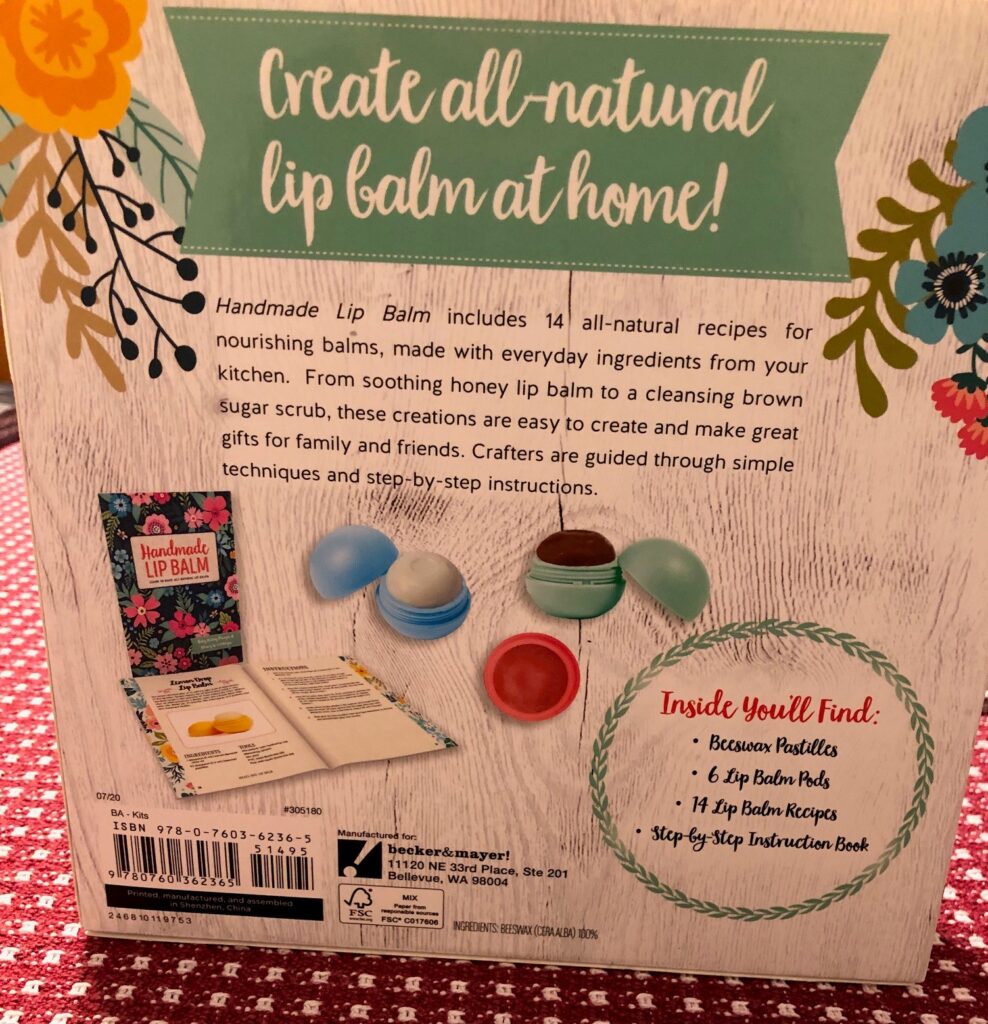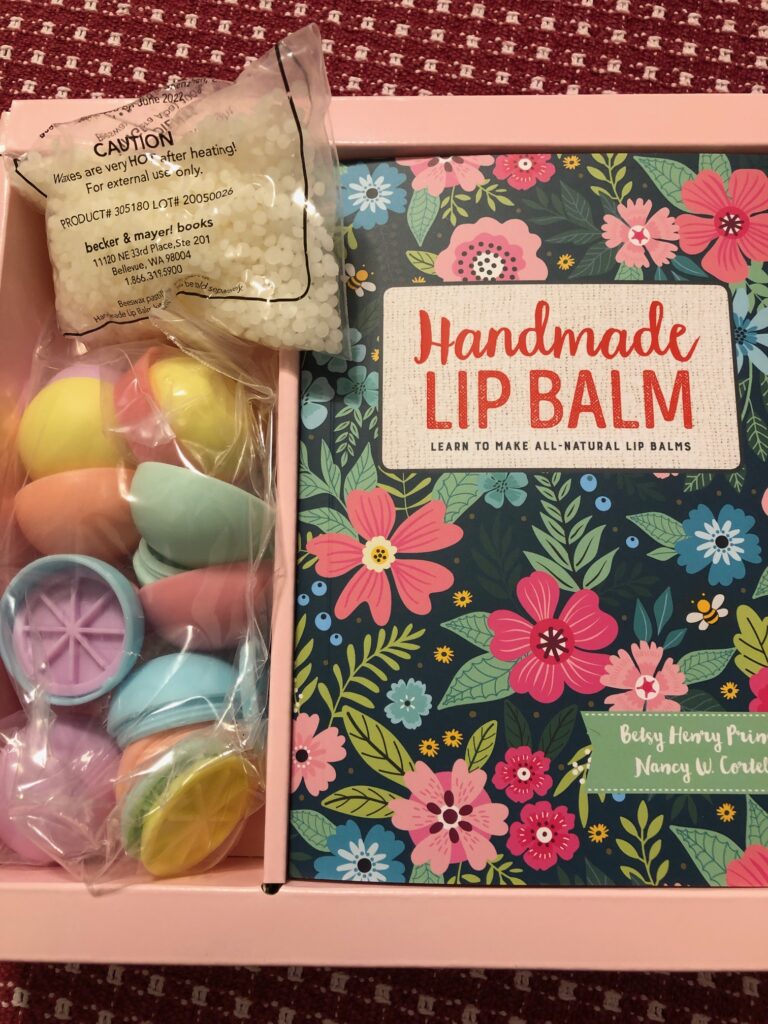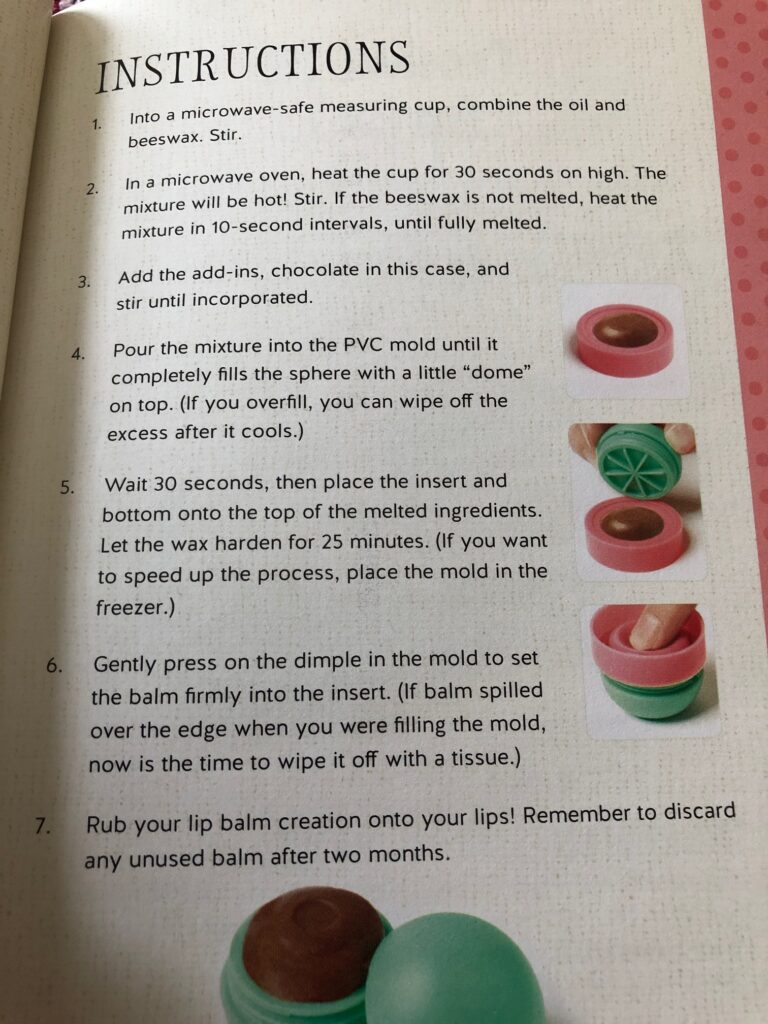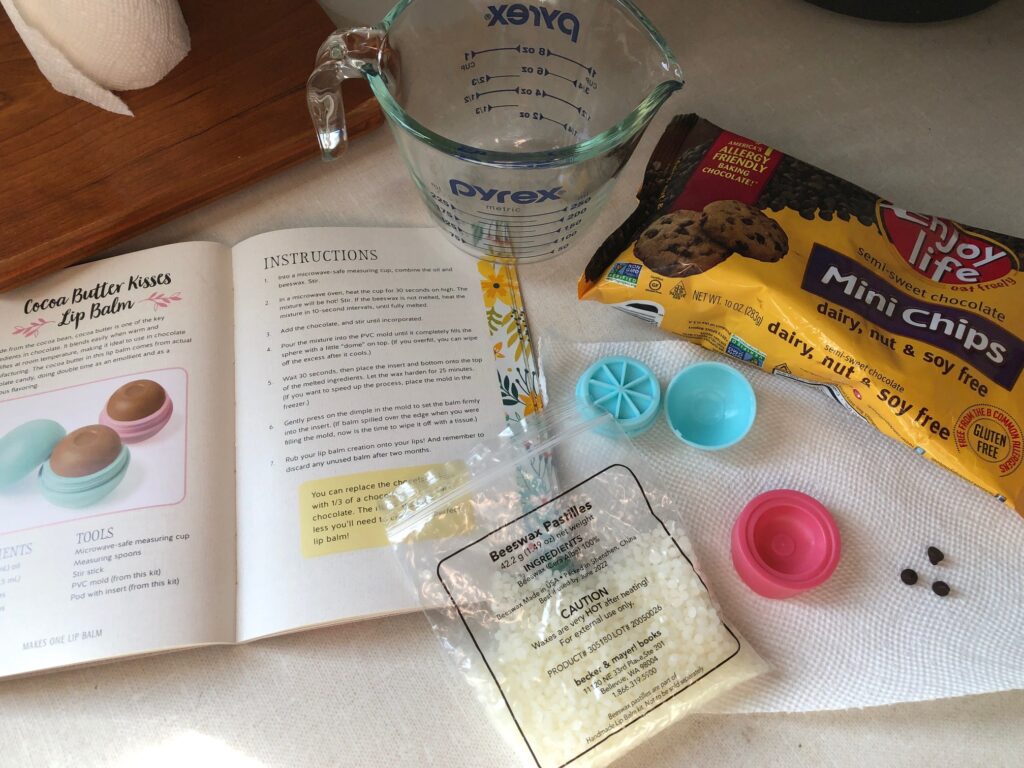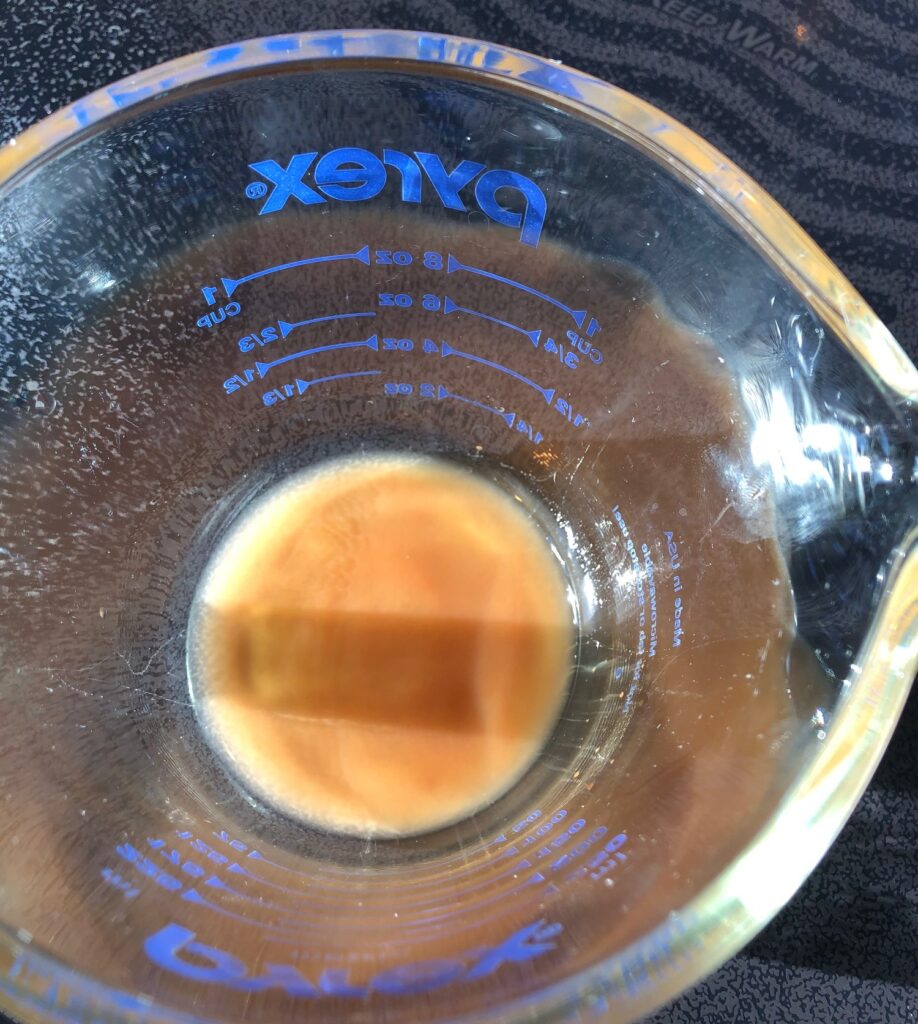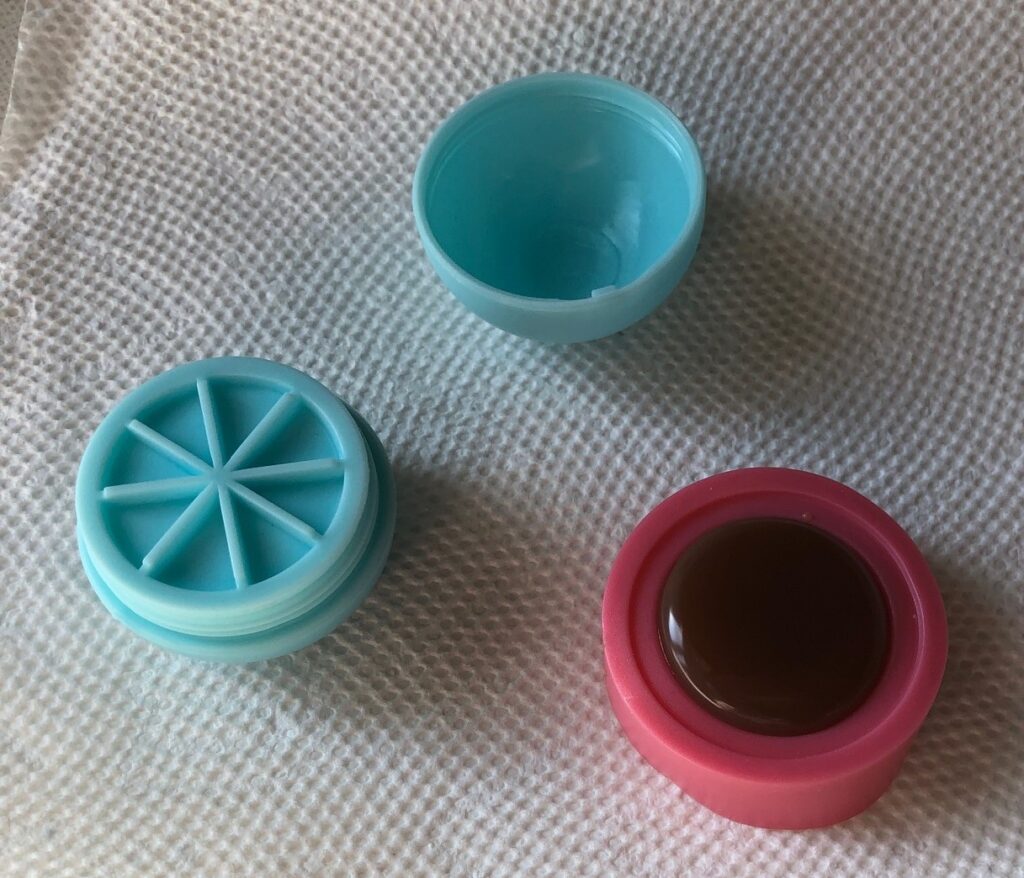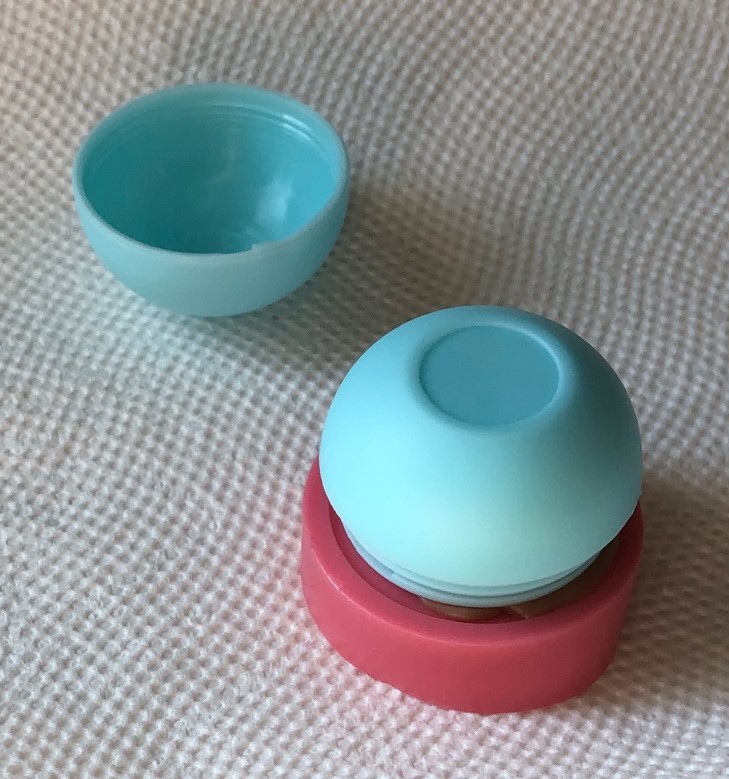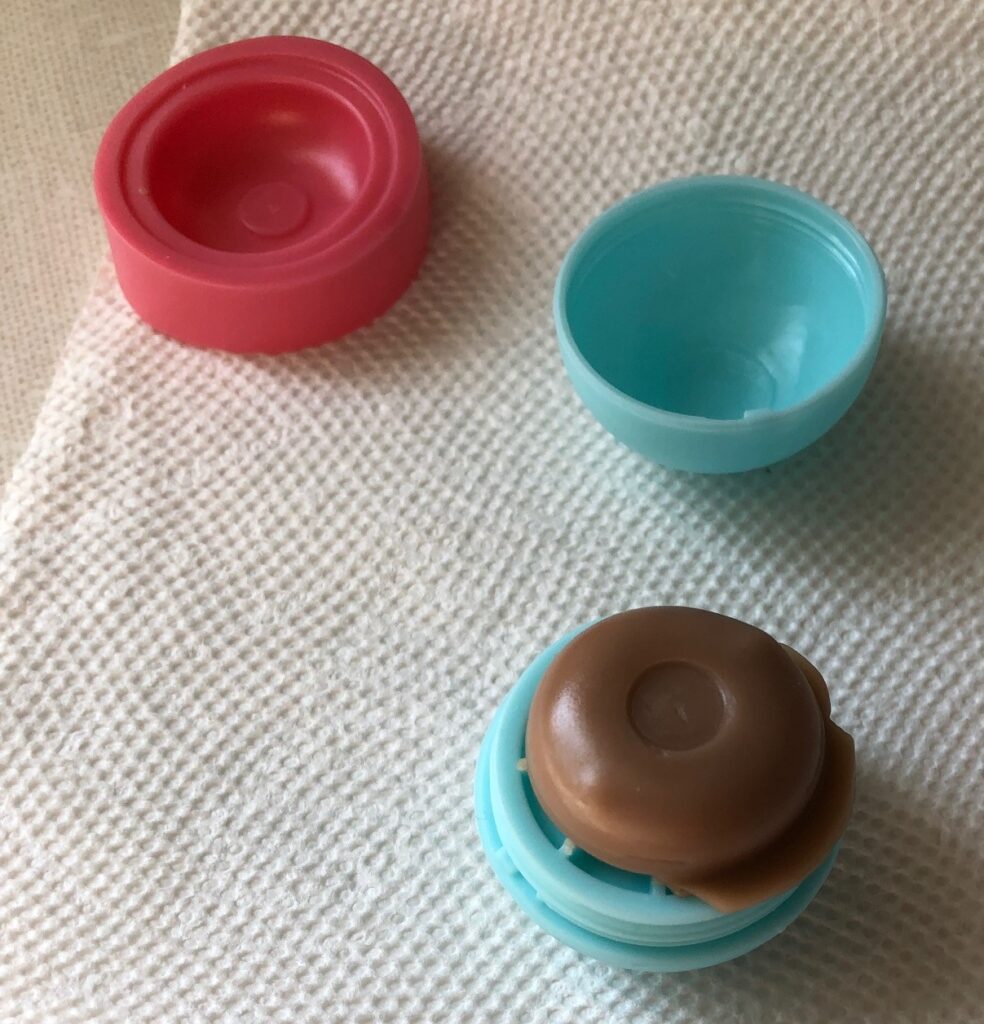Profile of an Artist: Toni Duchi
Today I’d like to tell you about a very talented and artistic friend of mine: Toni Duchi. She also happens to be my connection to Nittany Greyhounds and has been a friend for over 30 years.
While she has many creative talents, I think her current endeavors in making mixed media pieces (also called Assemblage Art) have produced some stunning pieces. I call them collages, which is defined as…an artistic composition of materials and objects pasted over a surface. Let me share an example of one she made specifically for me.
The Collection
Two years ago, Bert and I drove across the country to visit Ted’s family in California. We planned our trip to go through many National Parks along the way. As we traveled, I tried to NOT collect tacky t-shirts that I would never again. Instead, I picked up some books about the parks we were visiting and a few postcards that did the views justice. I did take a lot of pictures, but nothing was as good as the professionally done ones that got chosen to be on a postcard. At gift shops there were some tiny medallions representing each park, and even some polished rocks from the Petrified Forest. I wasn’t sure what I would do with these things, but they fit in my suitcase!
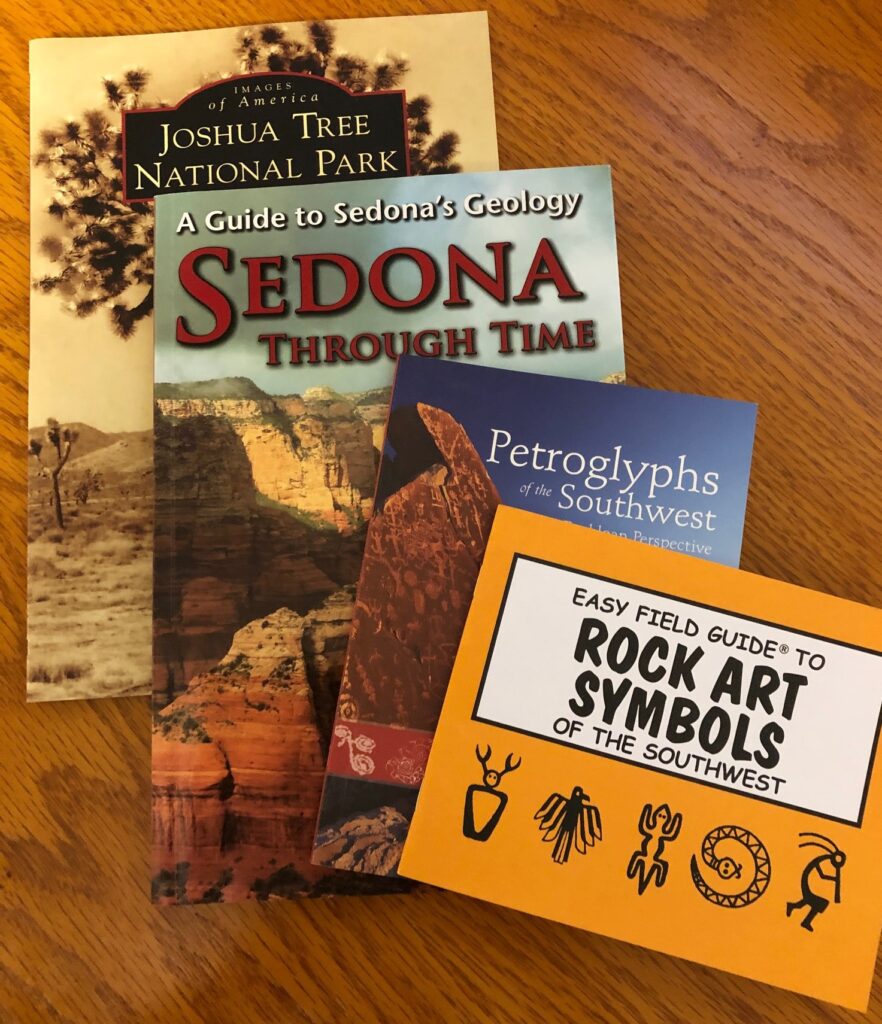
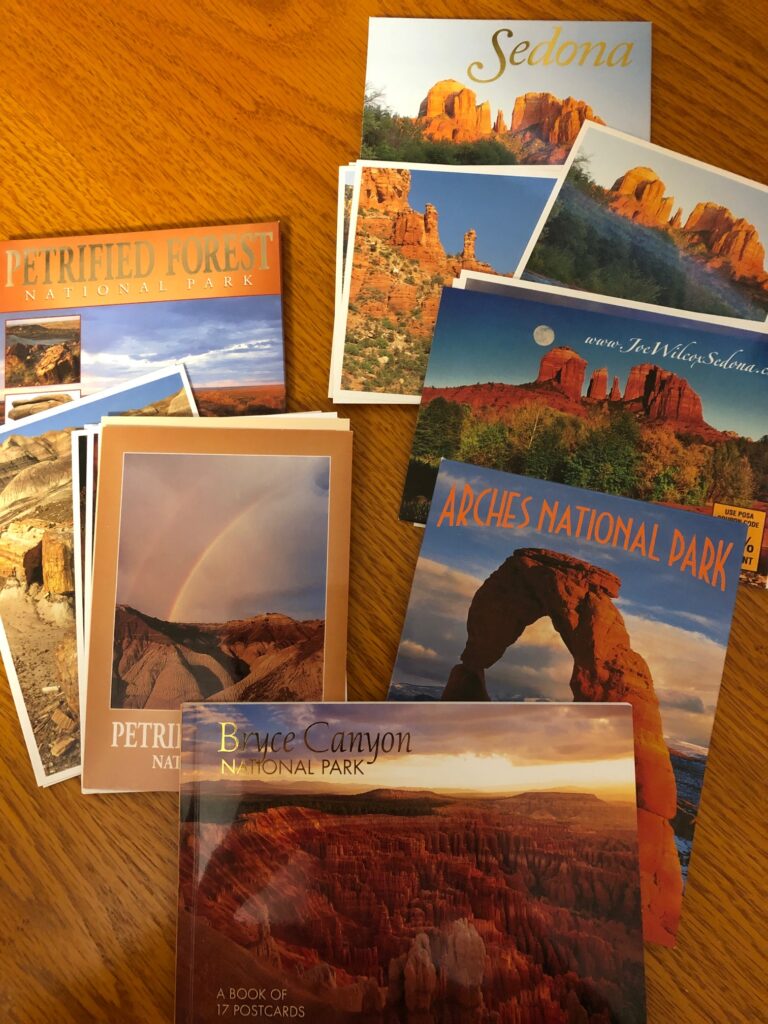
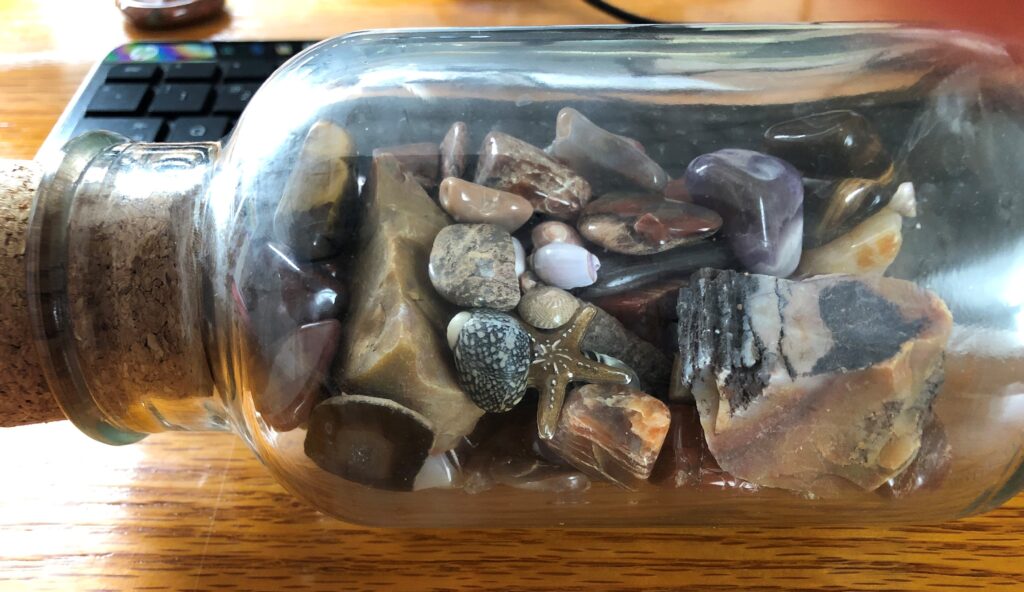
When I got home, I had a pile of stuff (called a collection) that was fun to look at, but eventually ended up sitting on a shelf.
Making a Collage with my Collection
Finally, I begged for help. Toni told me to choose a section of the country or part of the trip that had special meaning to me. It was obvious most of the stuff I had saved was from the Southwest; the landscape was so different from what I saw here in Pennsylvania.
I picked out an assortment of items from postcards, medallions, rocks, fossils and a Native American symbol (the metal hand below):
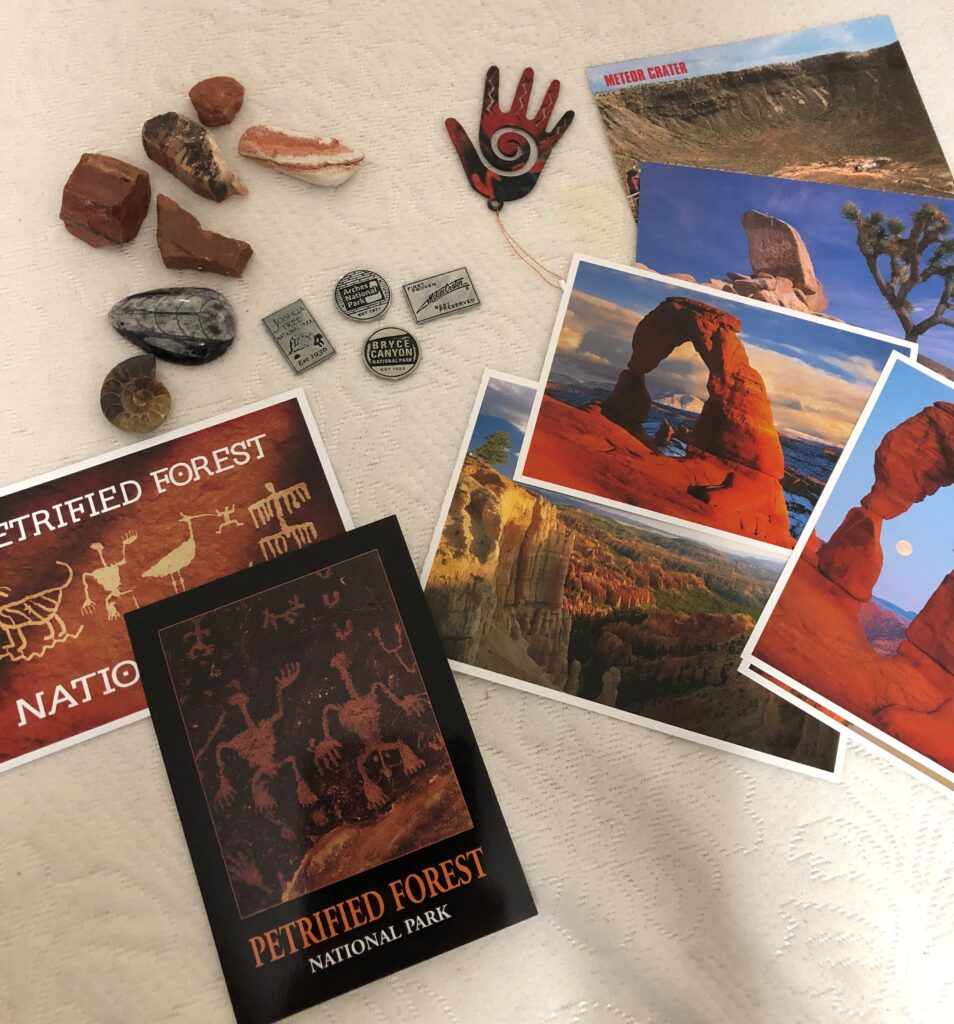
I handed this stuff over and had no idea what she would create with it. Several weeks later, this is what she brought me!
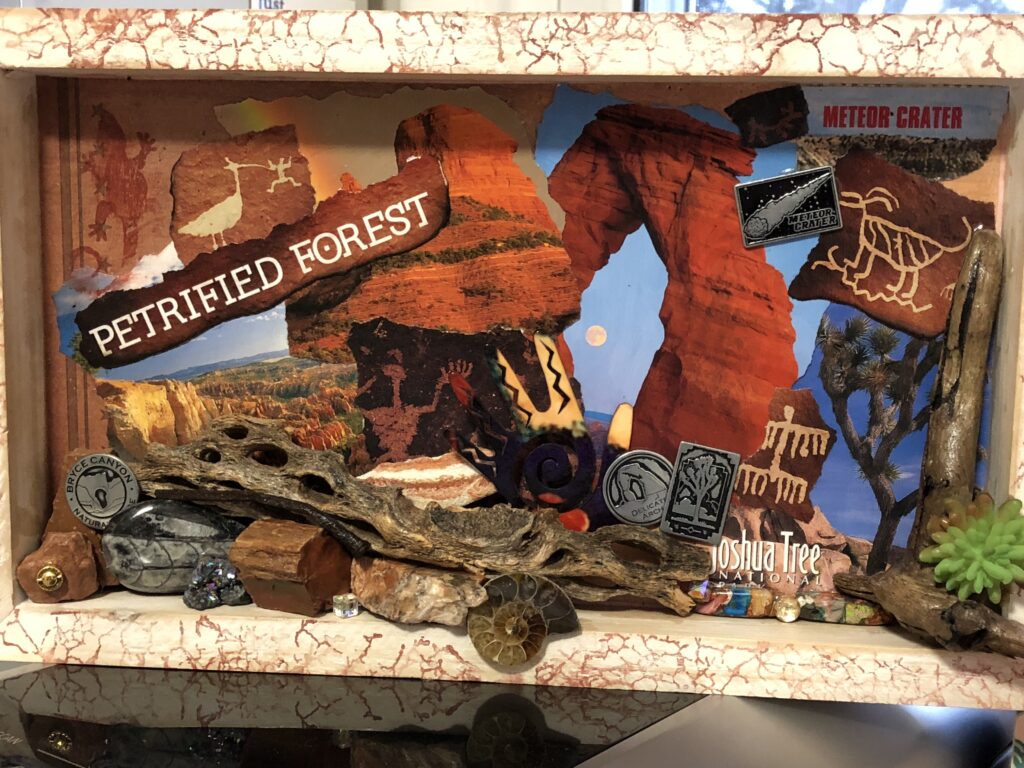
This shadow box collage is 12 1/2 inches by 7 1/2 inches. It beautifully represents my memories of the Southwest. The postcards became the background and the three-dimensional pieces built up the scene. She added a few pieces of driftwood she had on hand to pull it all together. Amazing!!!
This now sits on my desk and I’m reminded every day of the places we visited. The guide books are nearby if I want to read more. I still have more postcards and rocks leftover of the many other places we visited, but his collage pulls together a whole host of memories.
With all the various projects I enjoy doing, designing scenes like this is NOT one of my talents. Thank you, Toni!
A Second Request for Toni
I recently had another design dilemma that Toni helped me with. I was working on a new wall hanging for my living room. It will be a sampler quilt wall hanging using new colors for the room…silver and burgundy. Here are the blocks laid out on the floor to show the colors:
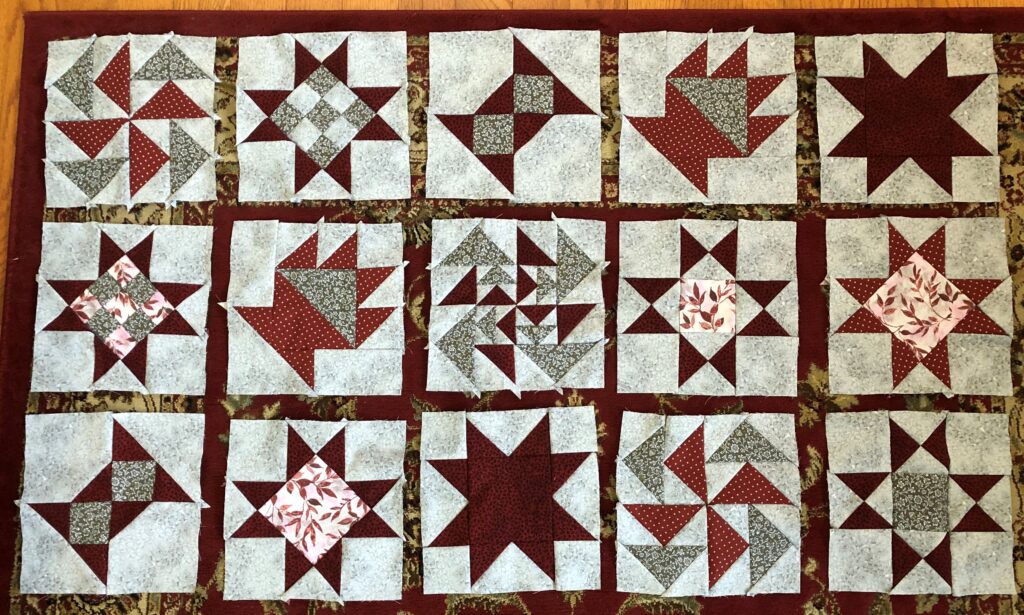
I showed these blocks to Toni and asked if she’d make me something to go on the wall by the front door. Using her talents with polymer clay, she made me a framed collage made of individual tiles in silver and burgundy. Here are some pictures!
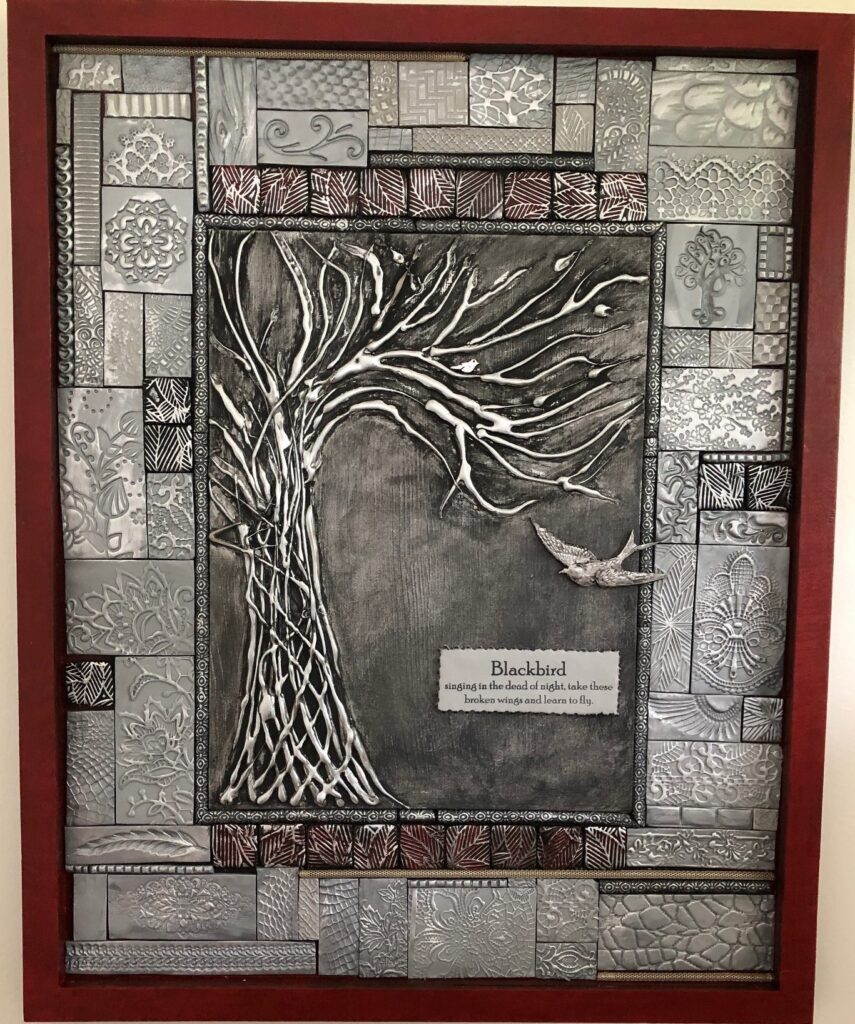
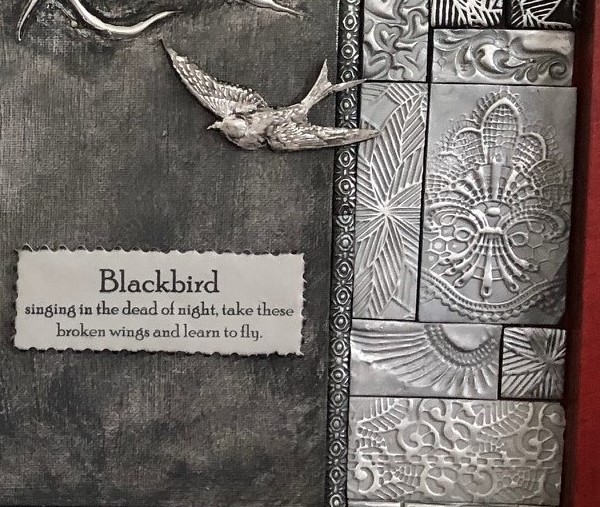
Amazing! I will treasure this picture forever! Thank you, Friend!
If you’d like to see more of Toni’s work, her store on Etsy is called the PaisleyArtStudio. Her work often has tiny hidden greyhounds or inspirational sayings added to the collage. I really appreciate her ability to visualize and create such stunning works of art! Enjoy!
Please comment or email me directly at marykisner@comcast.net. Thanks!

